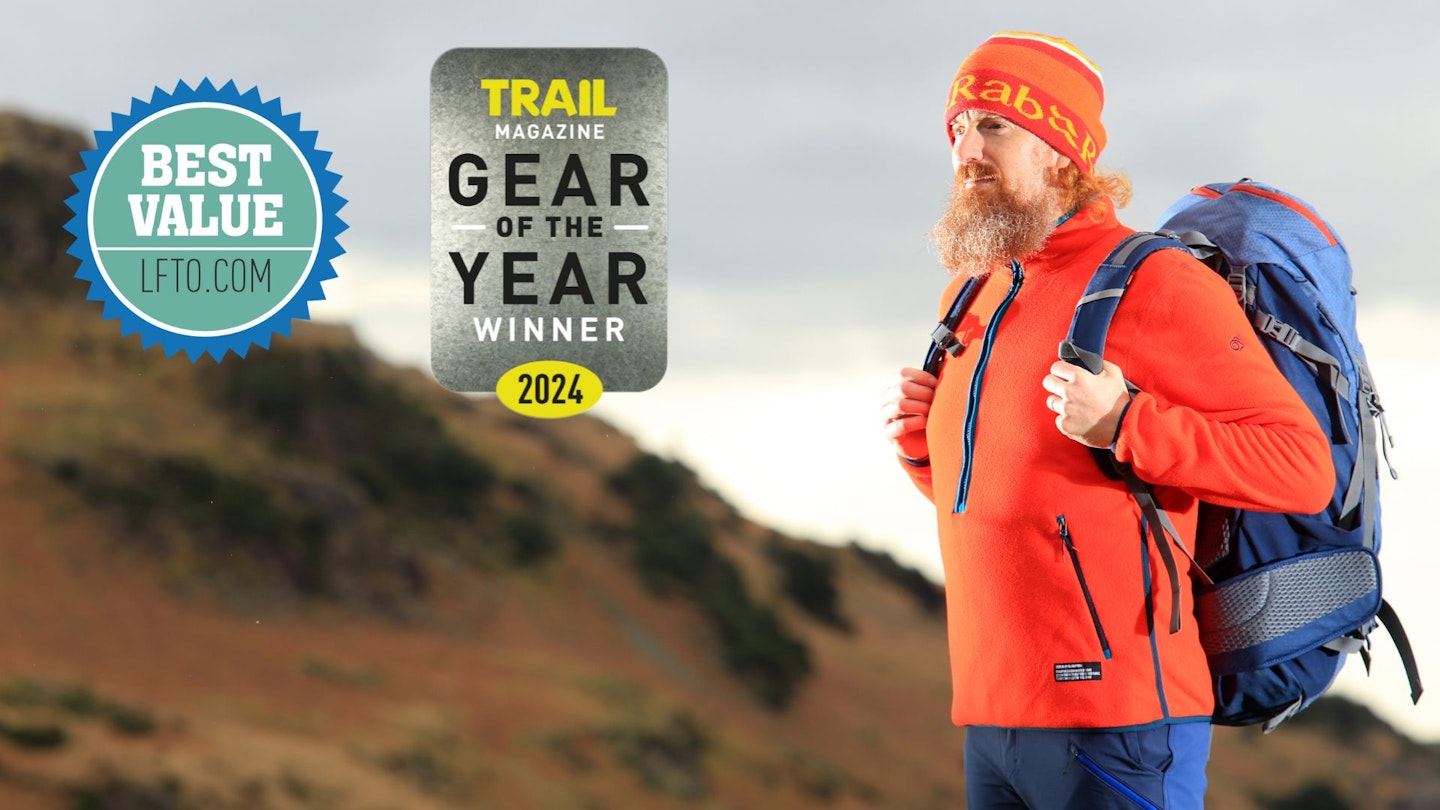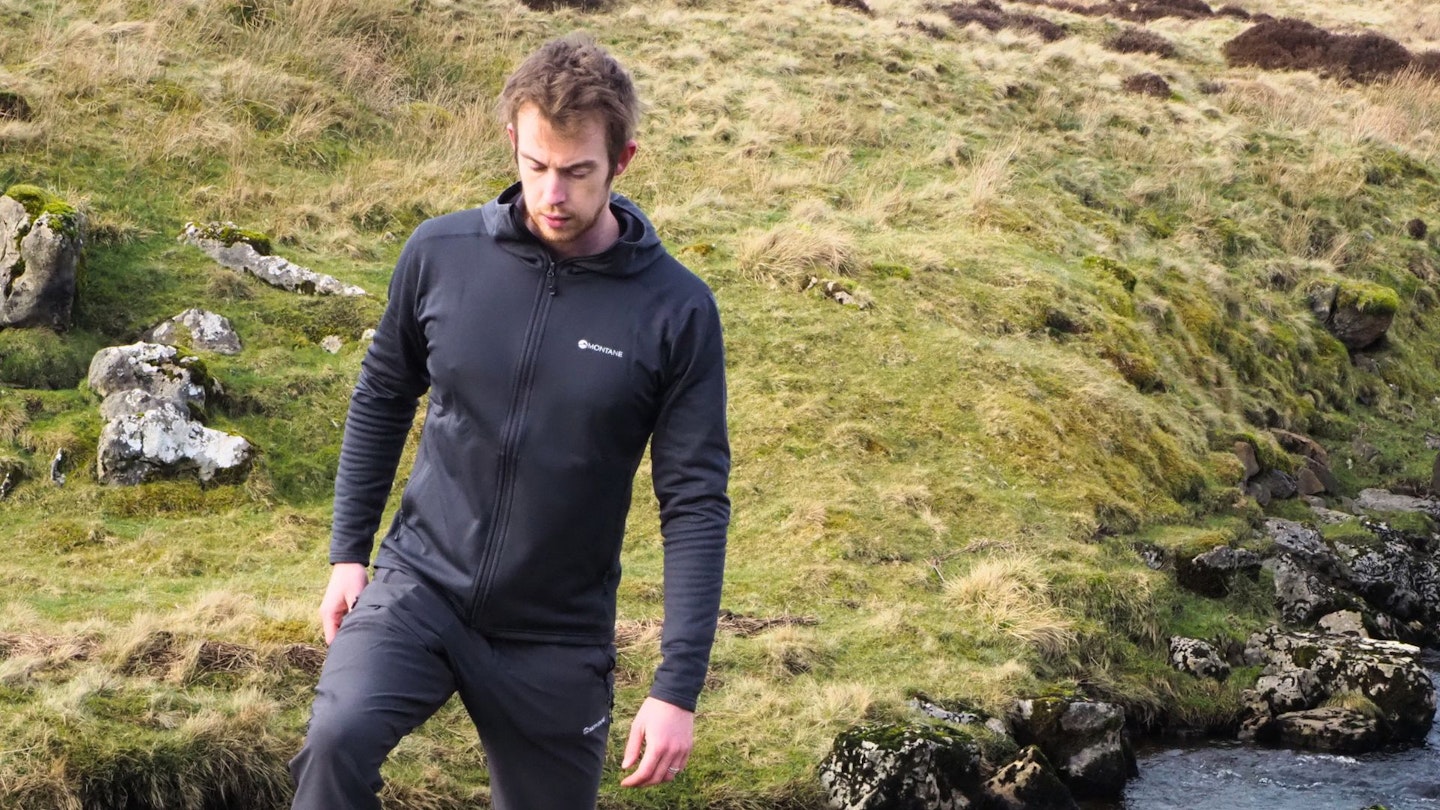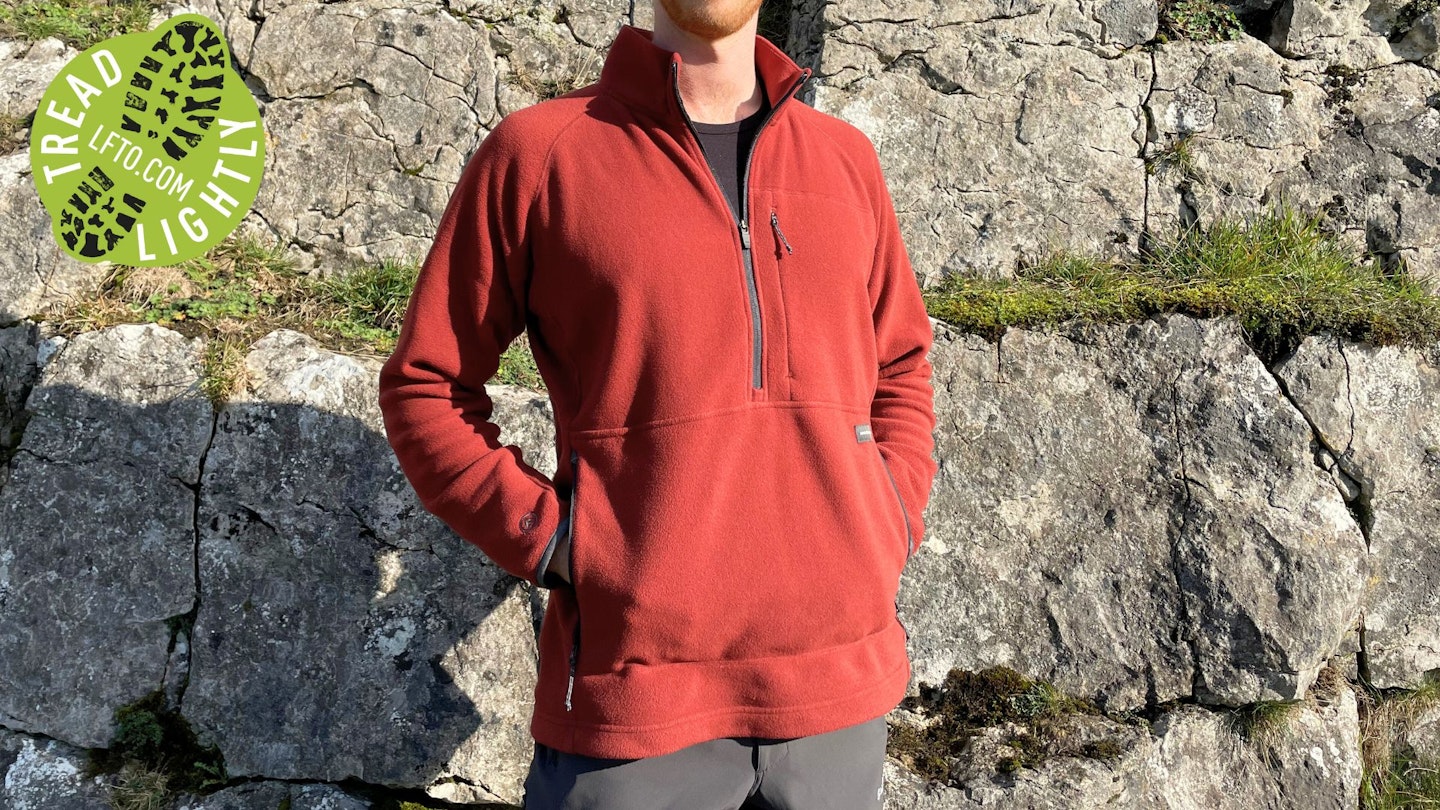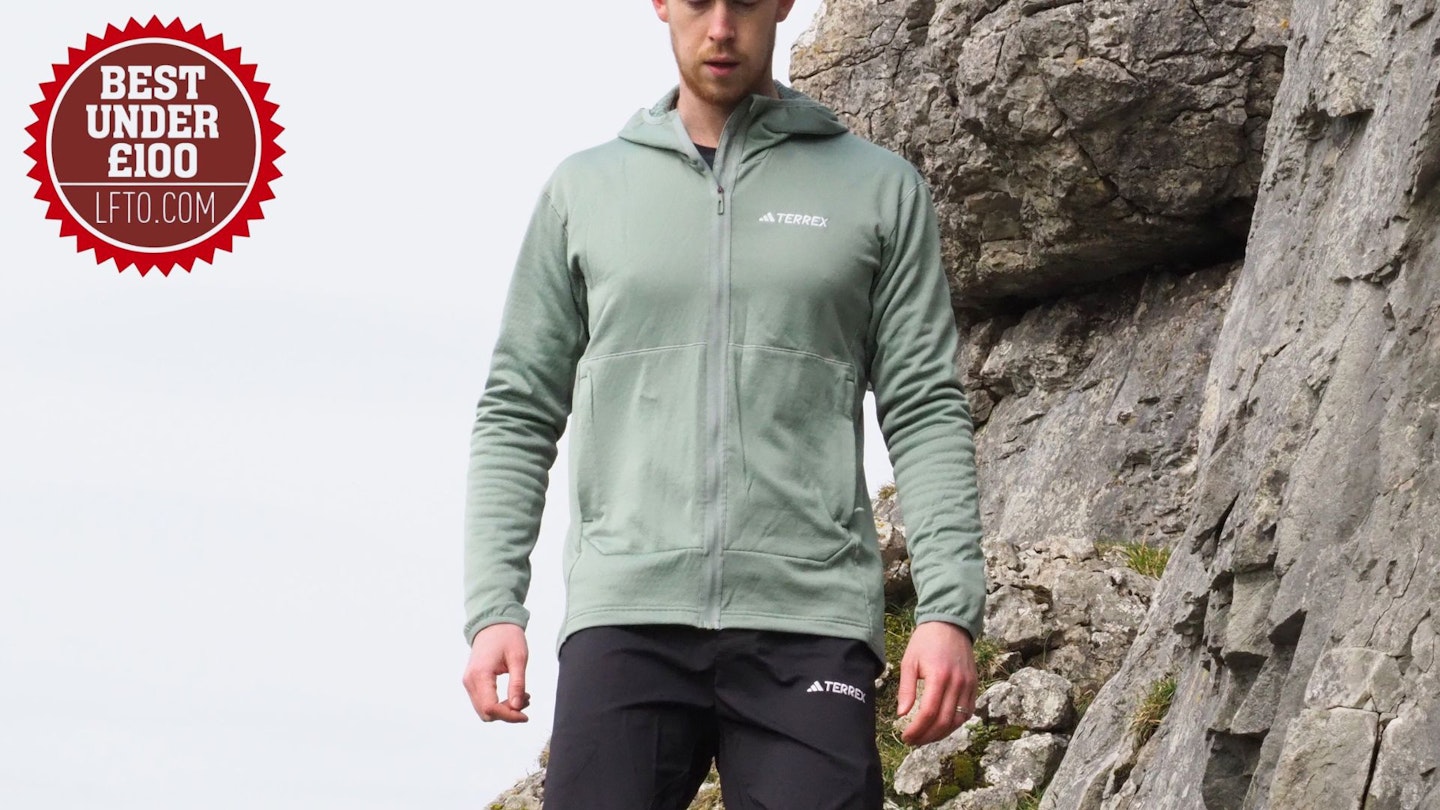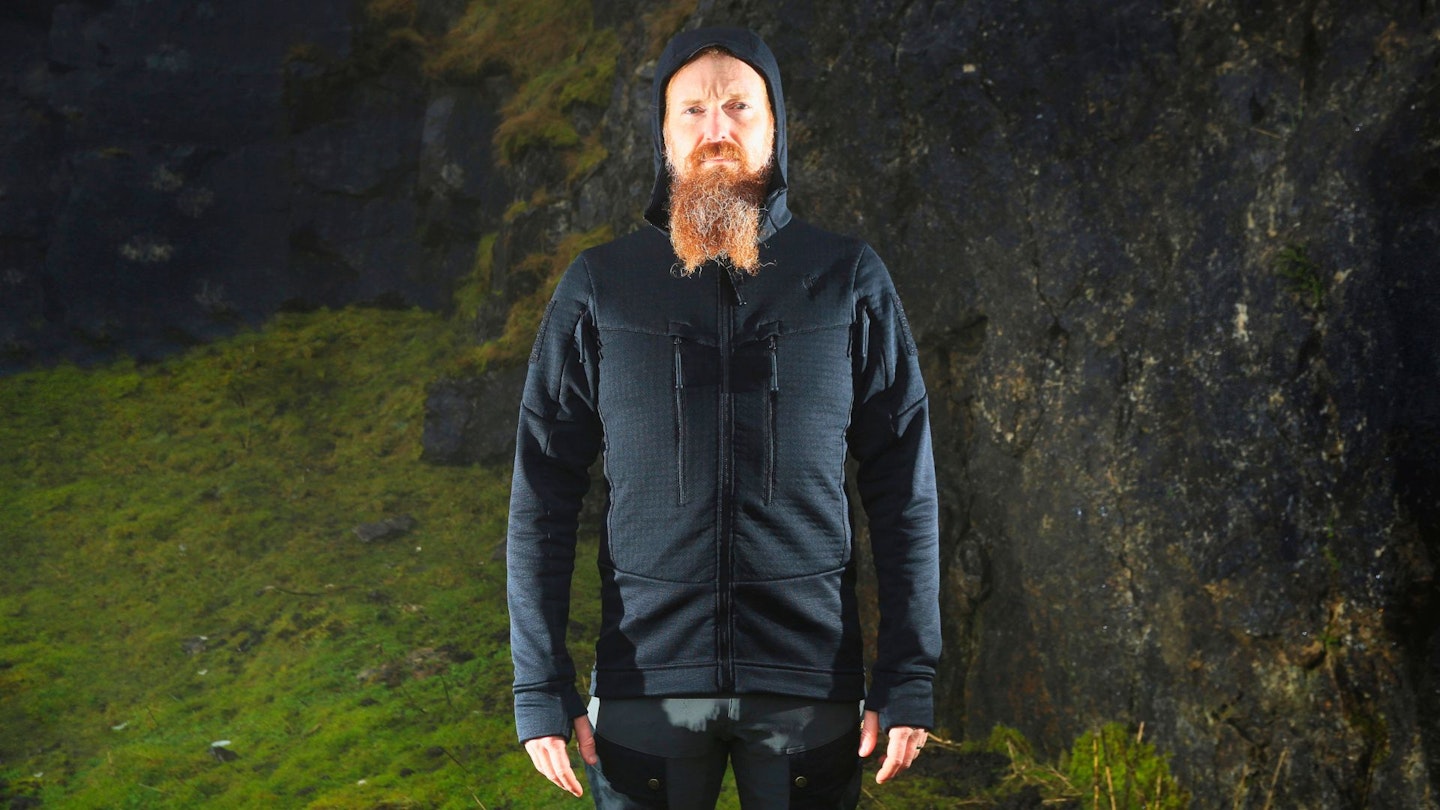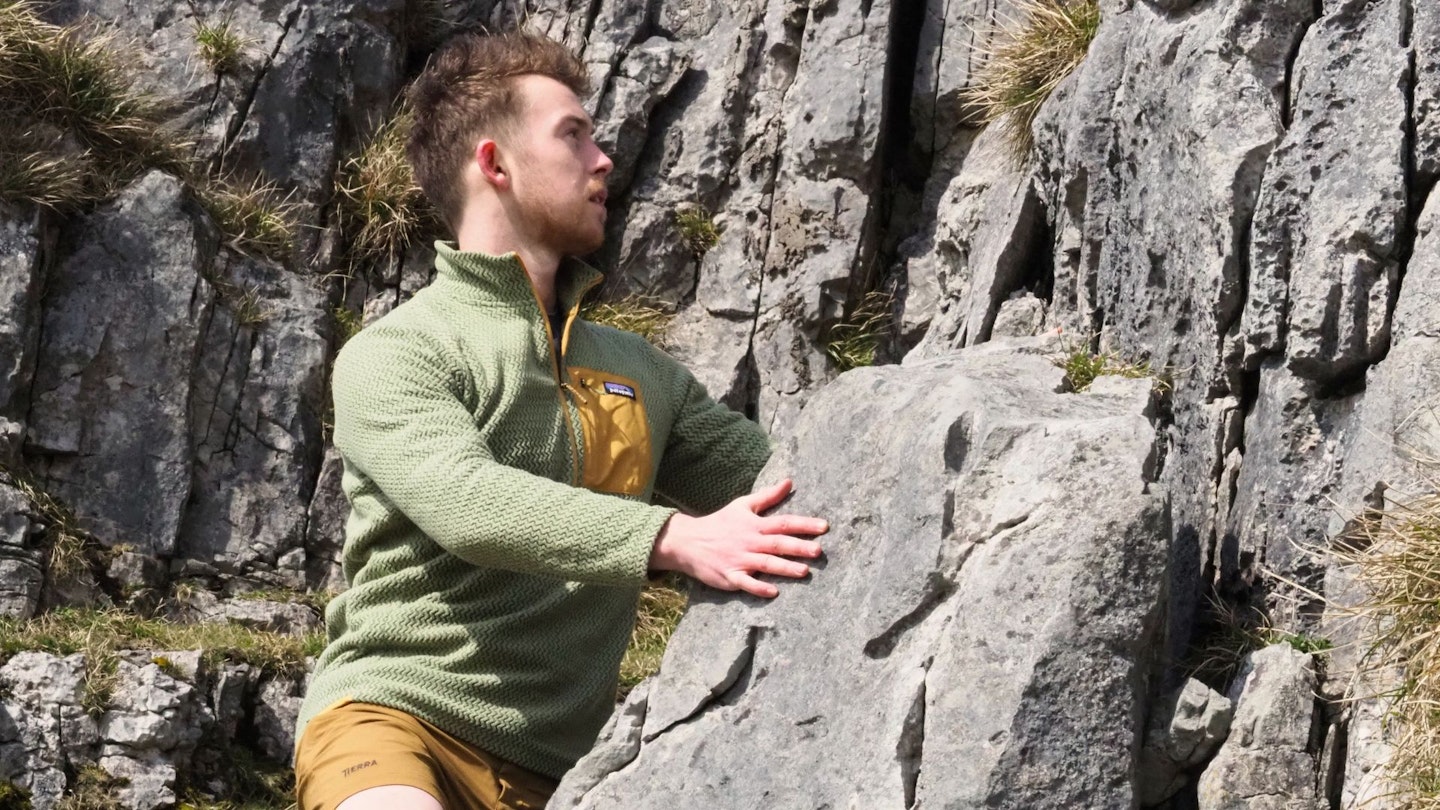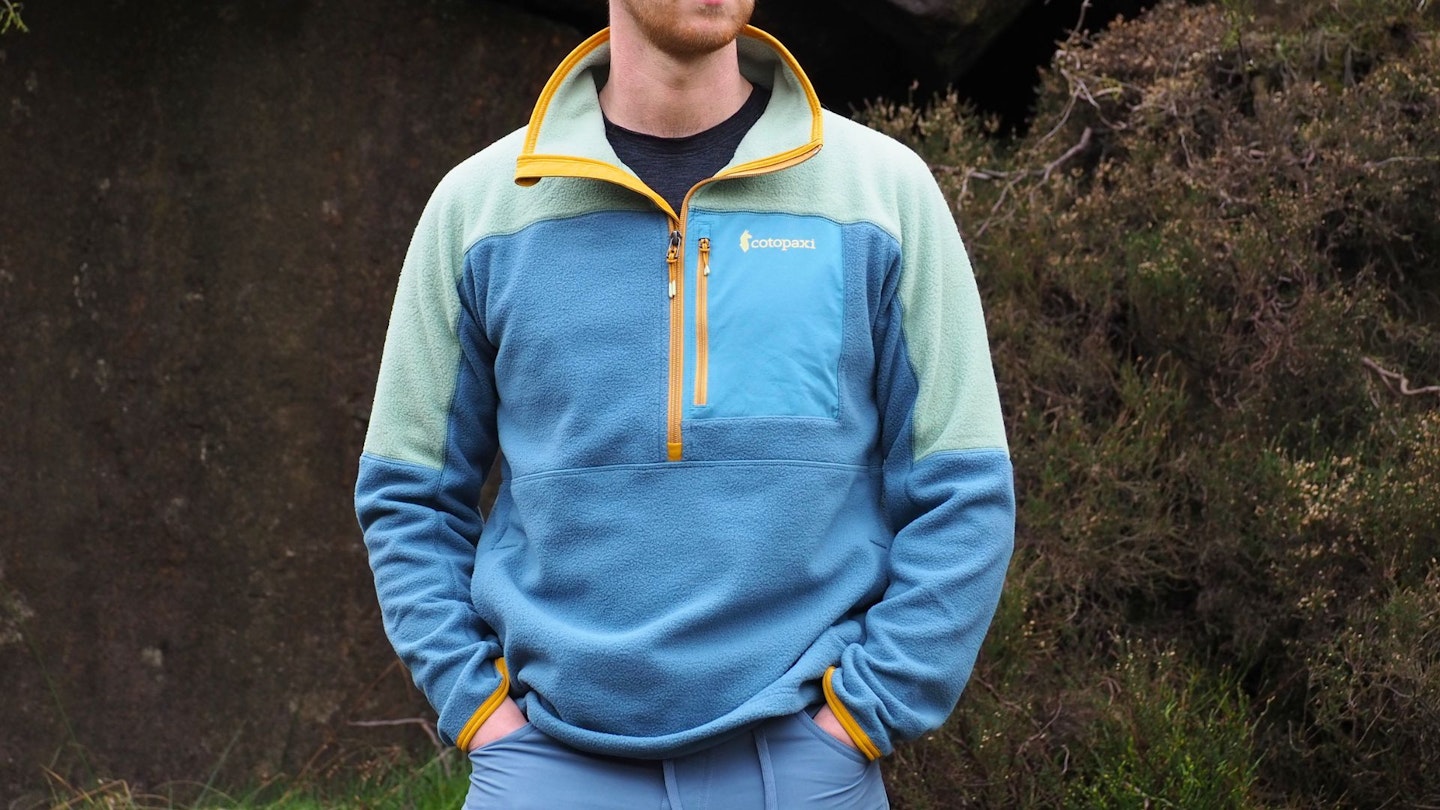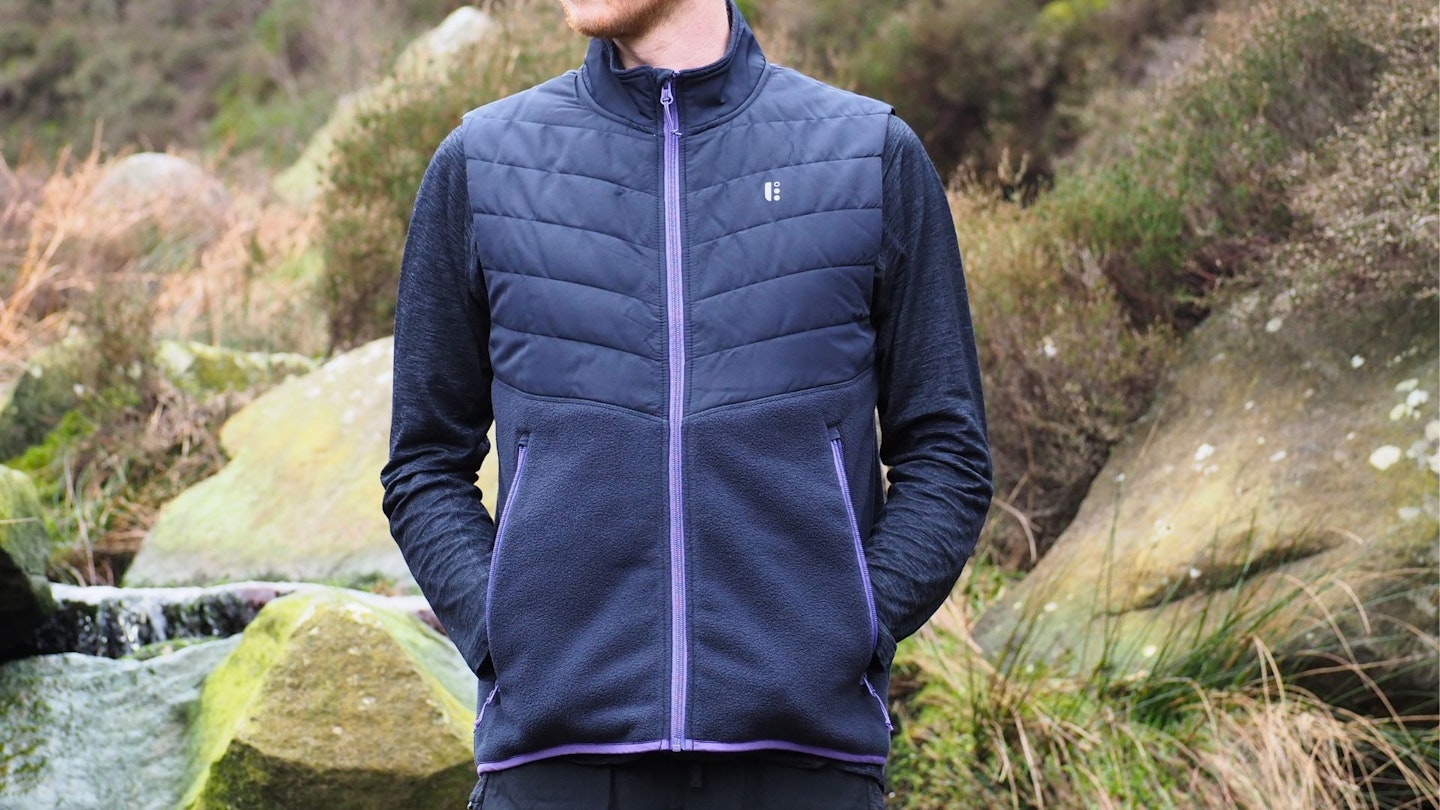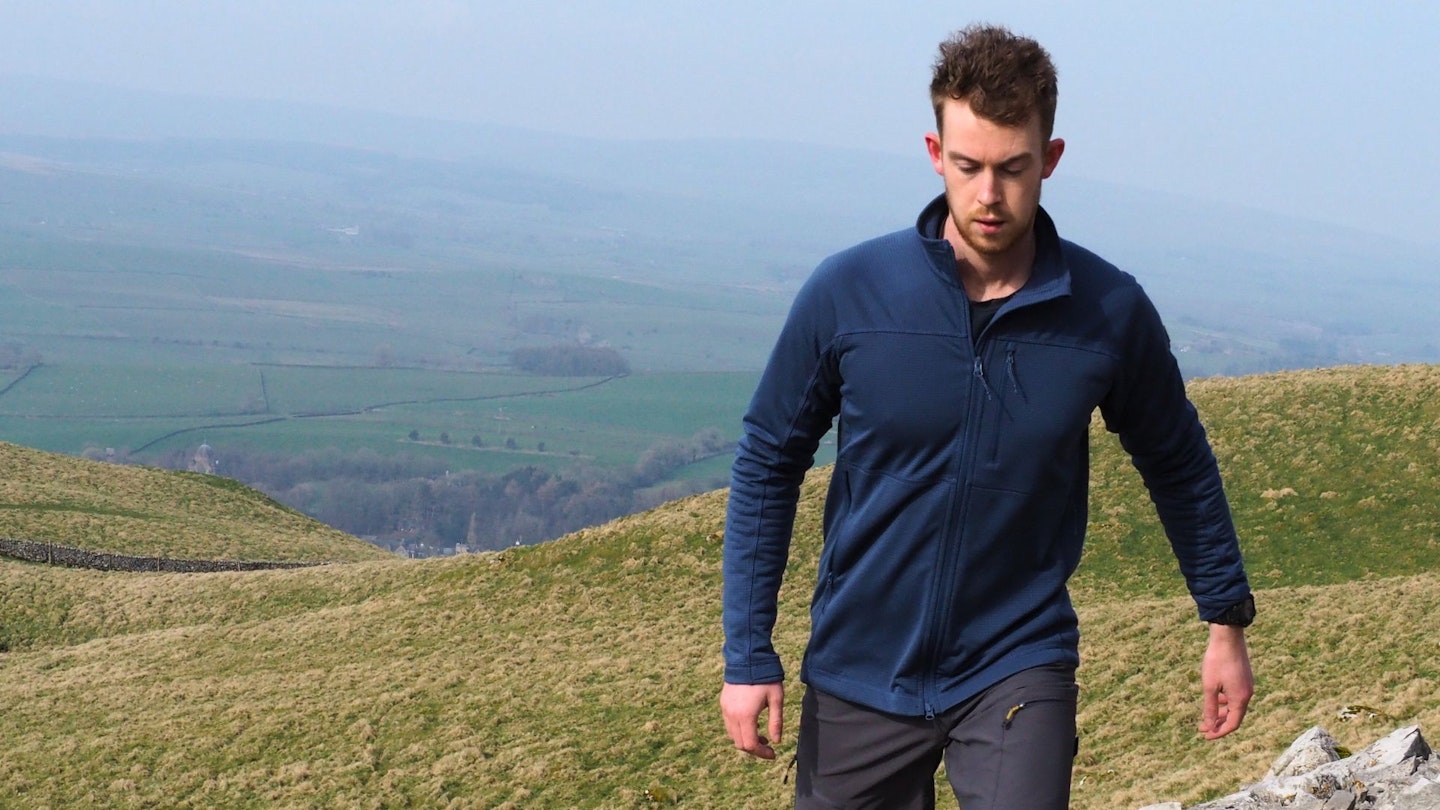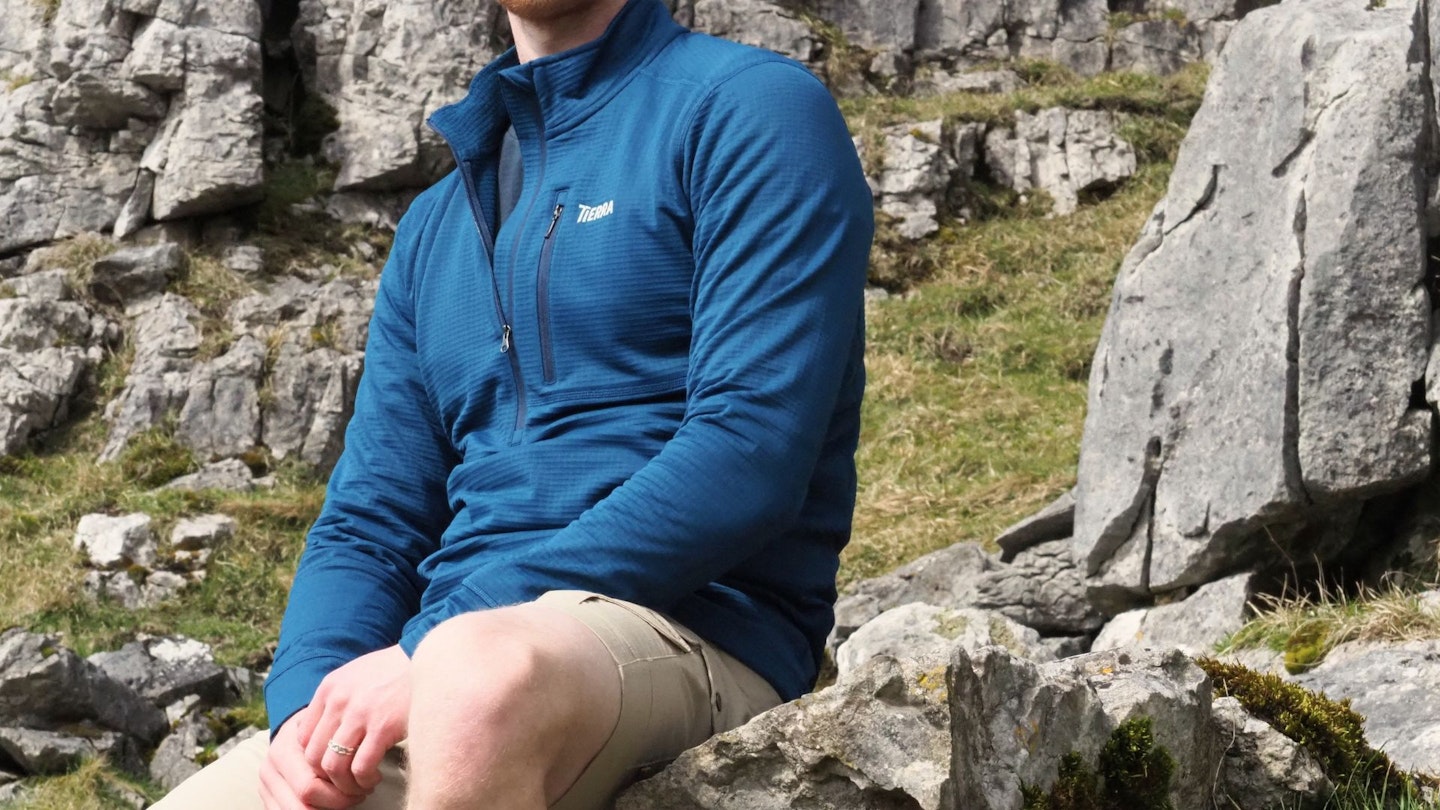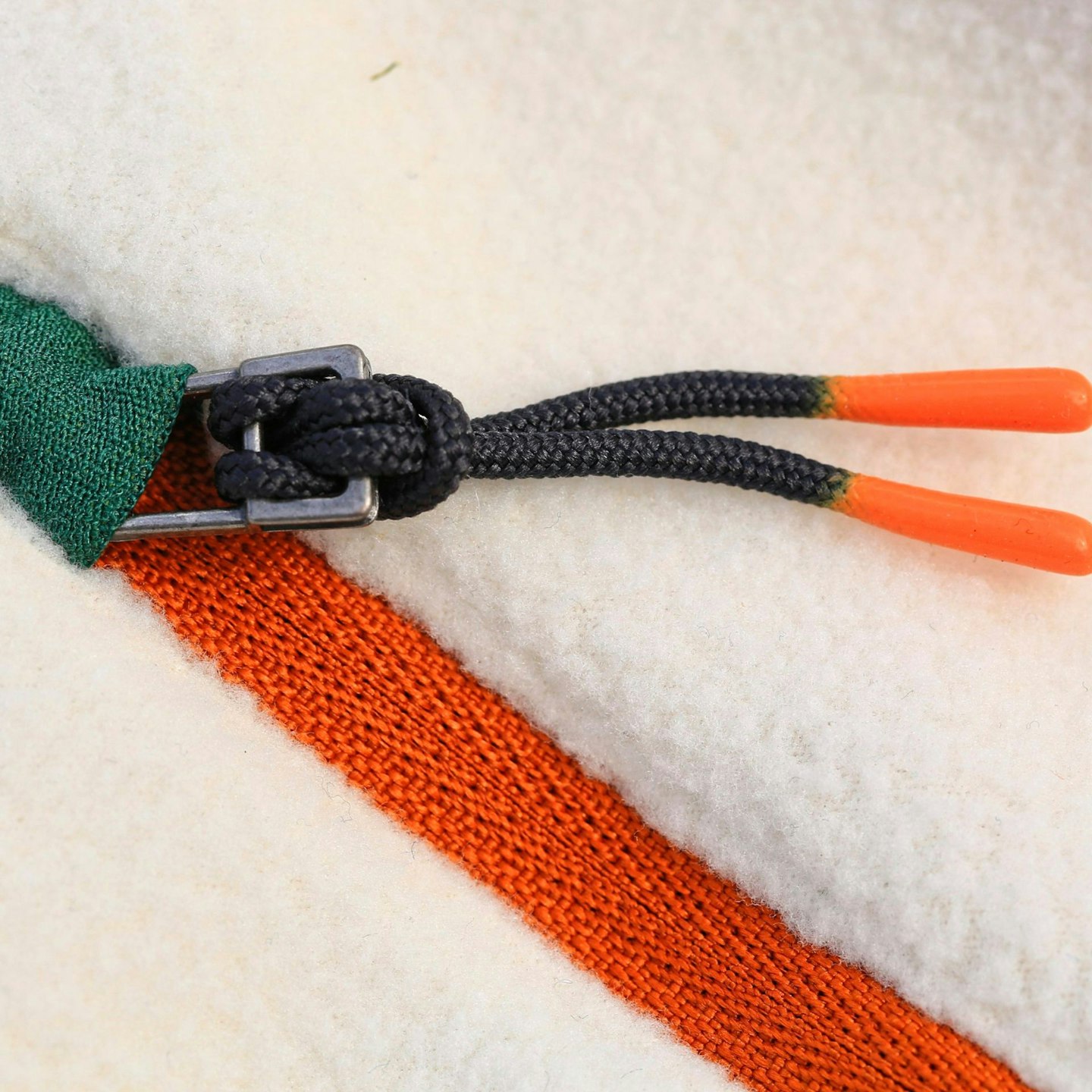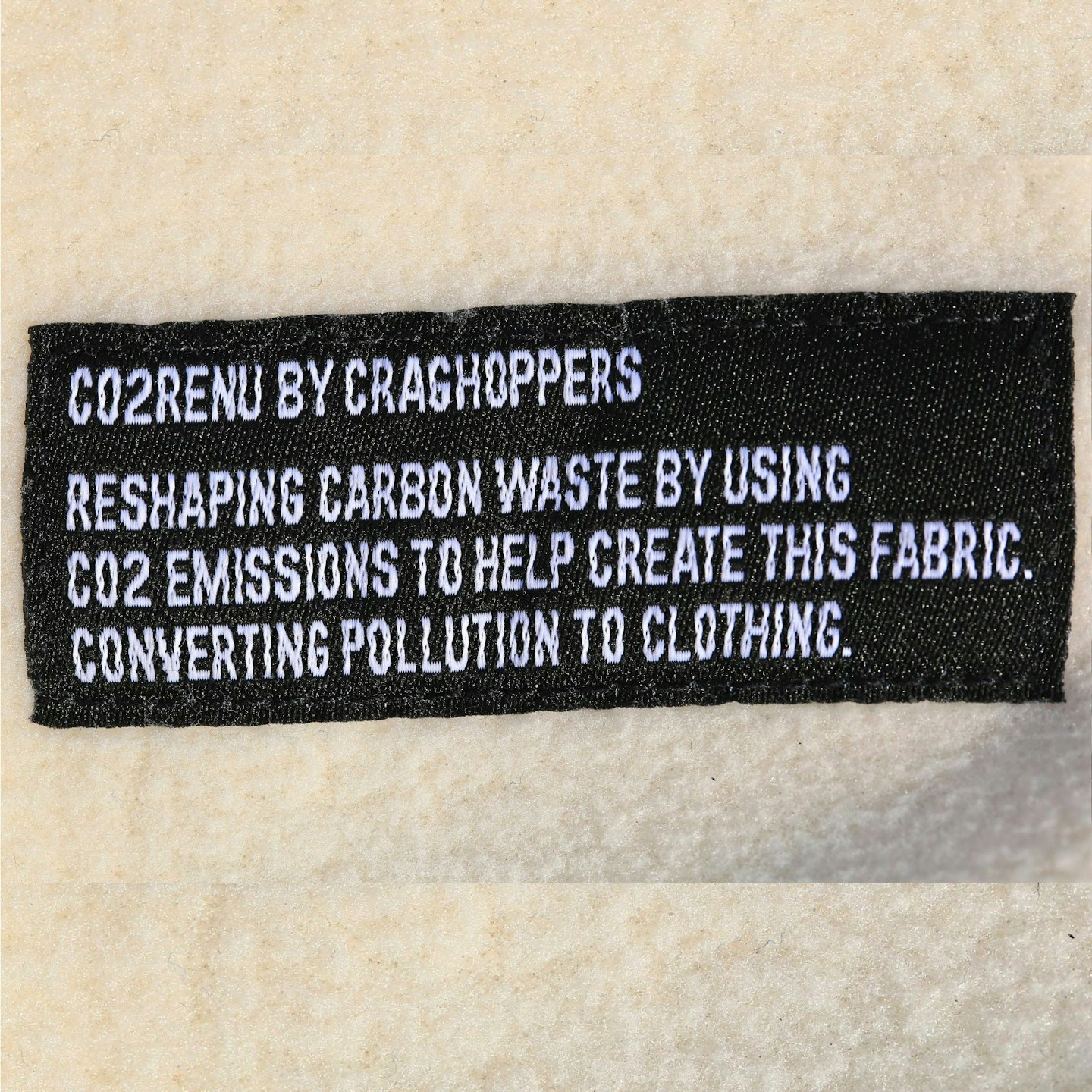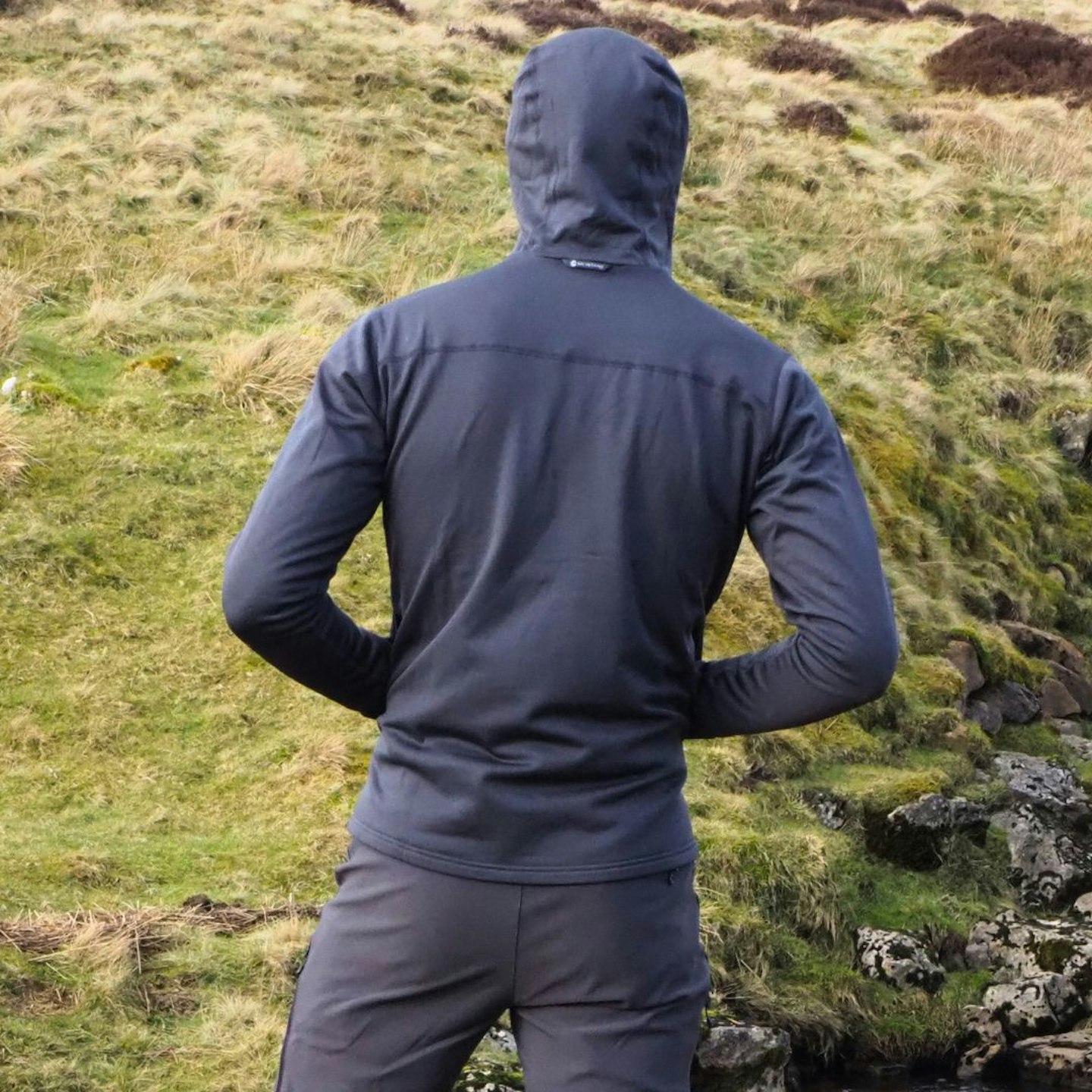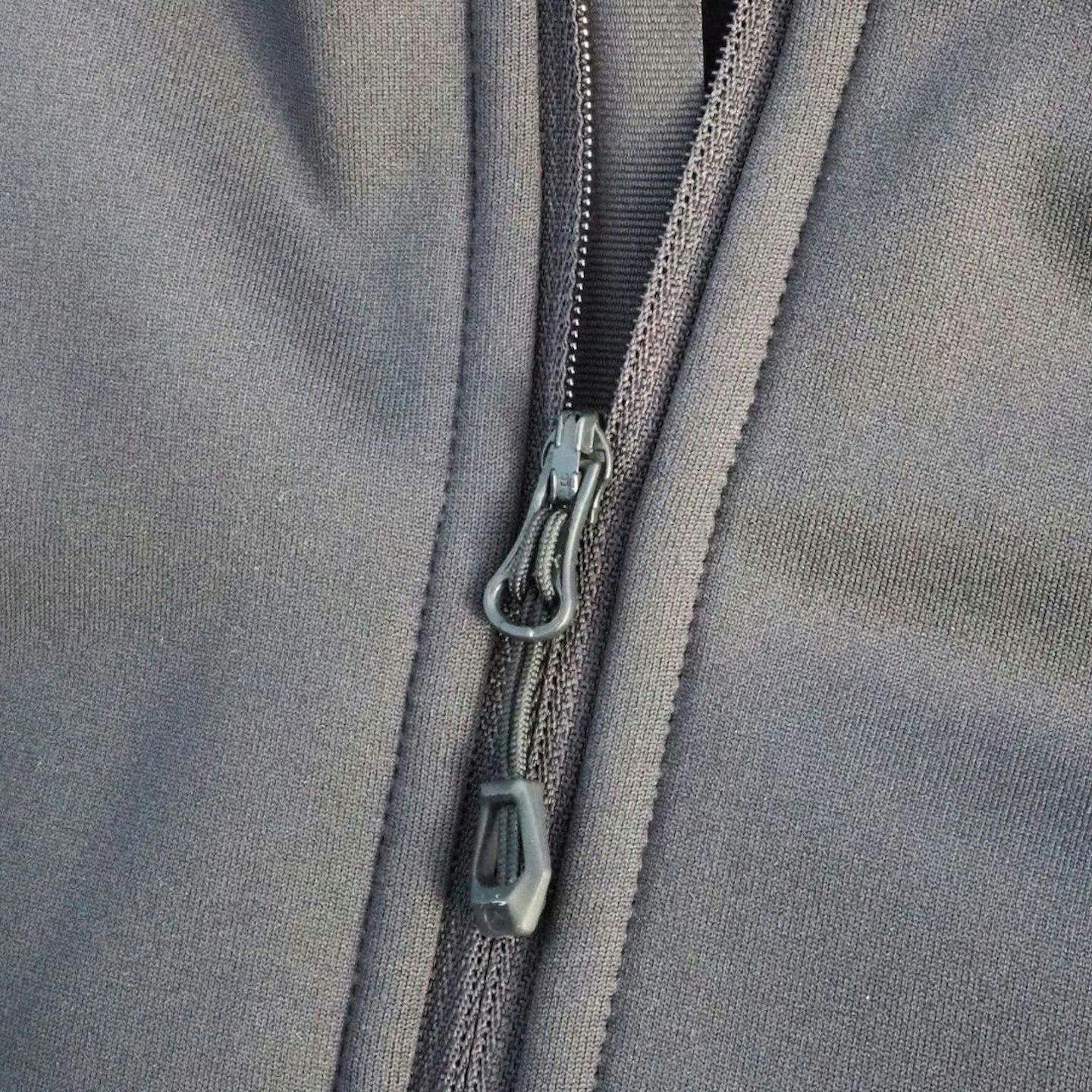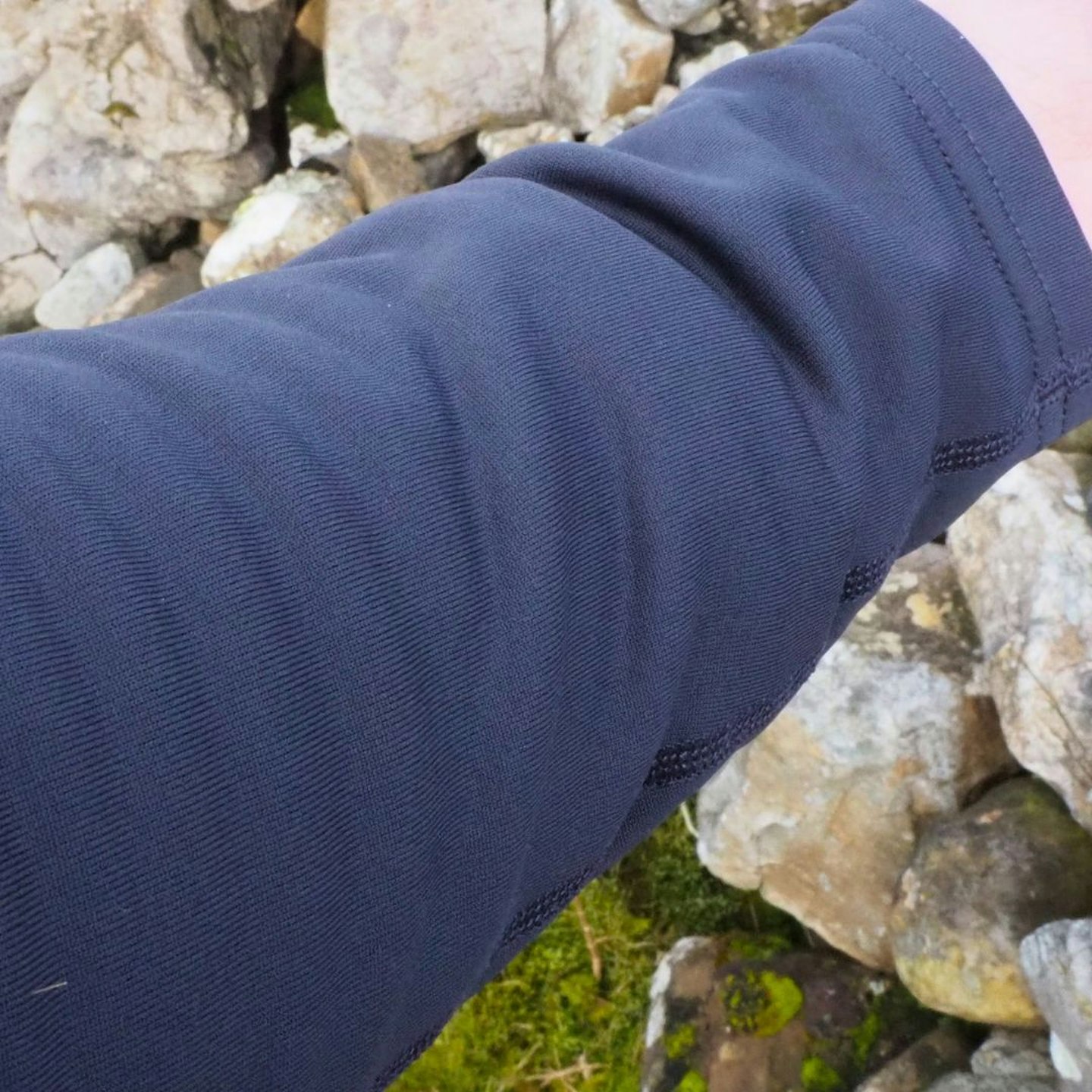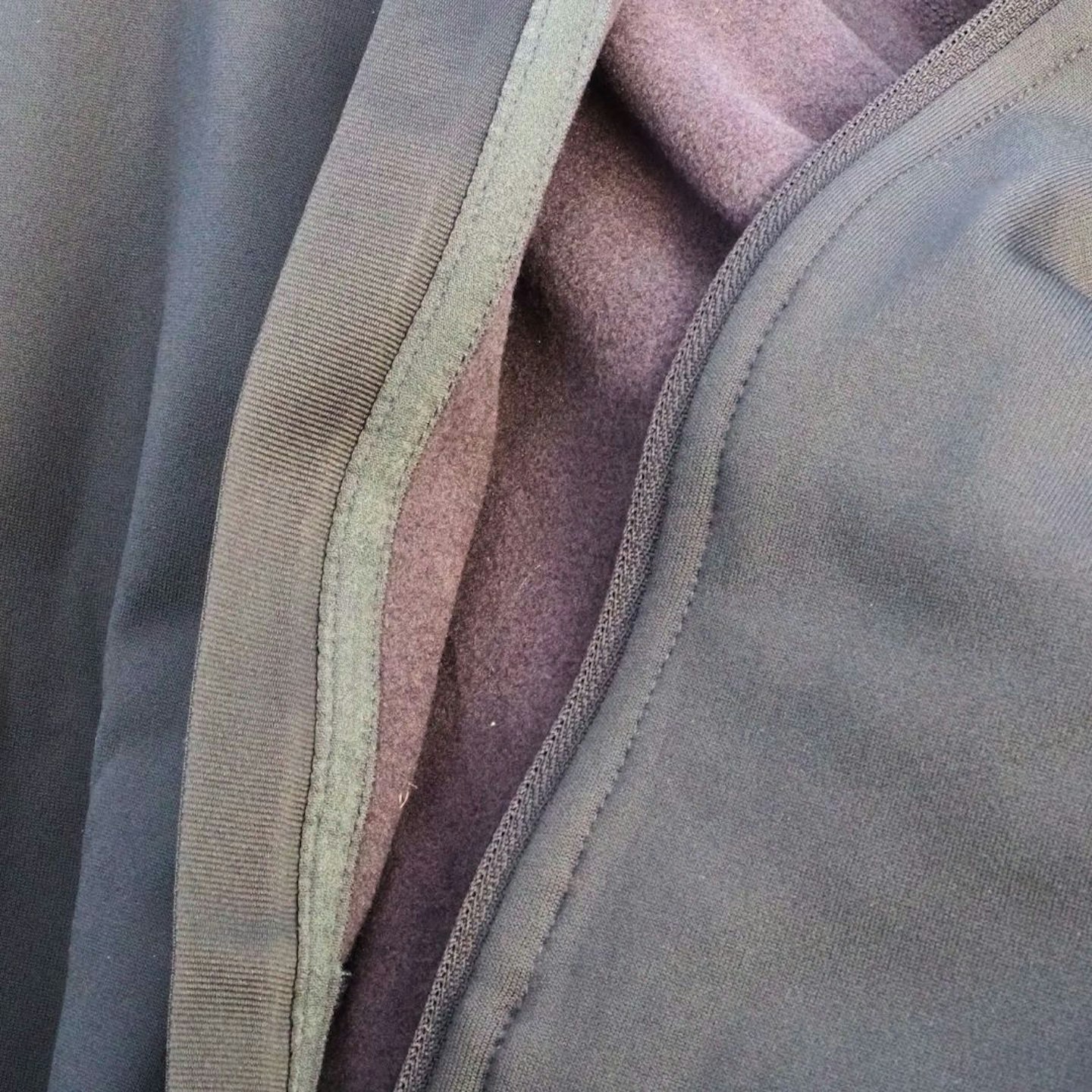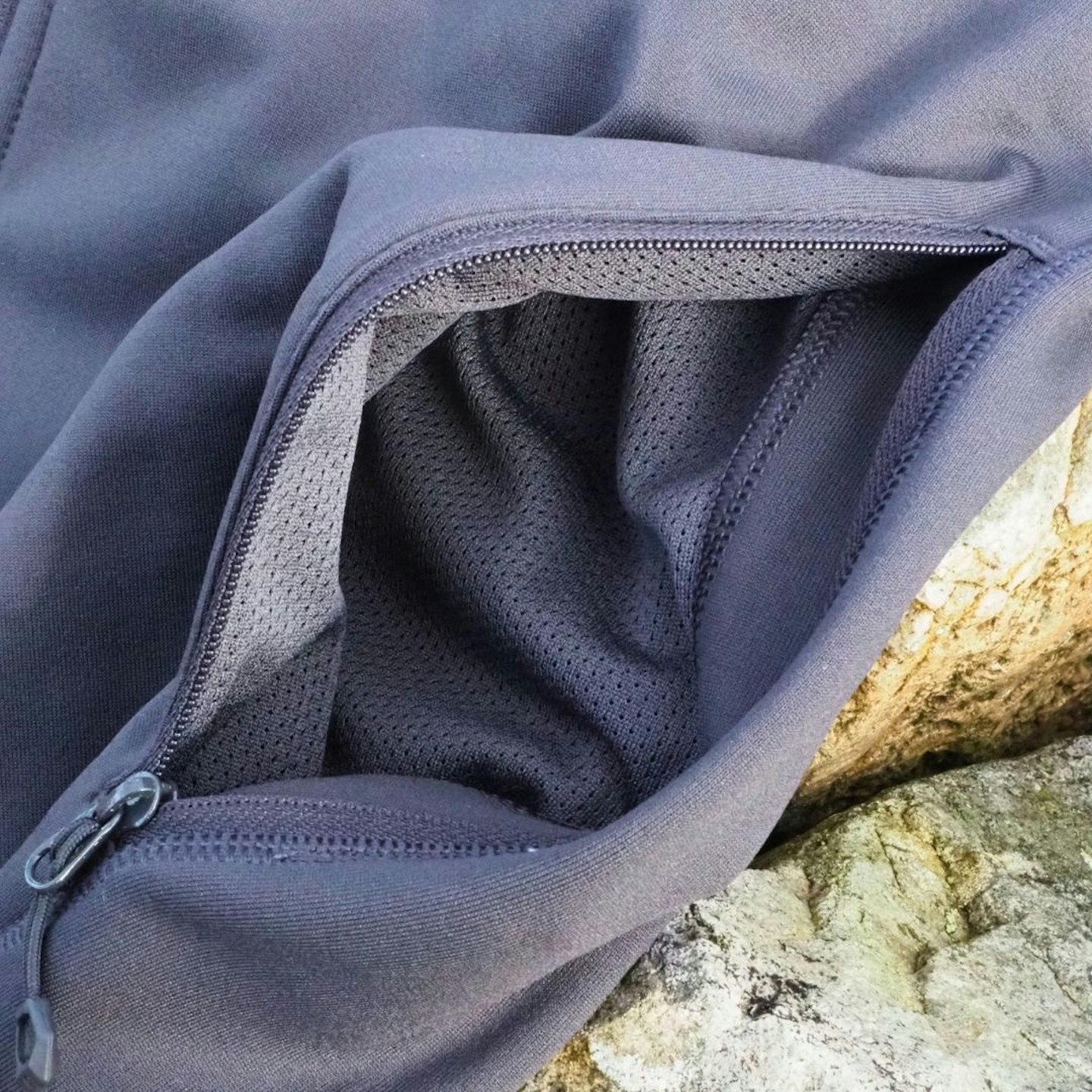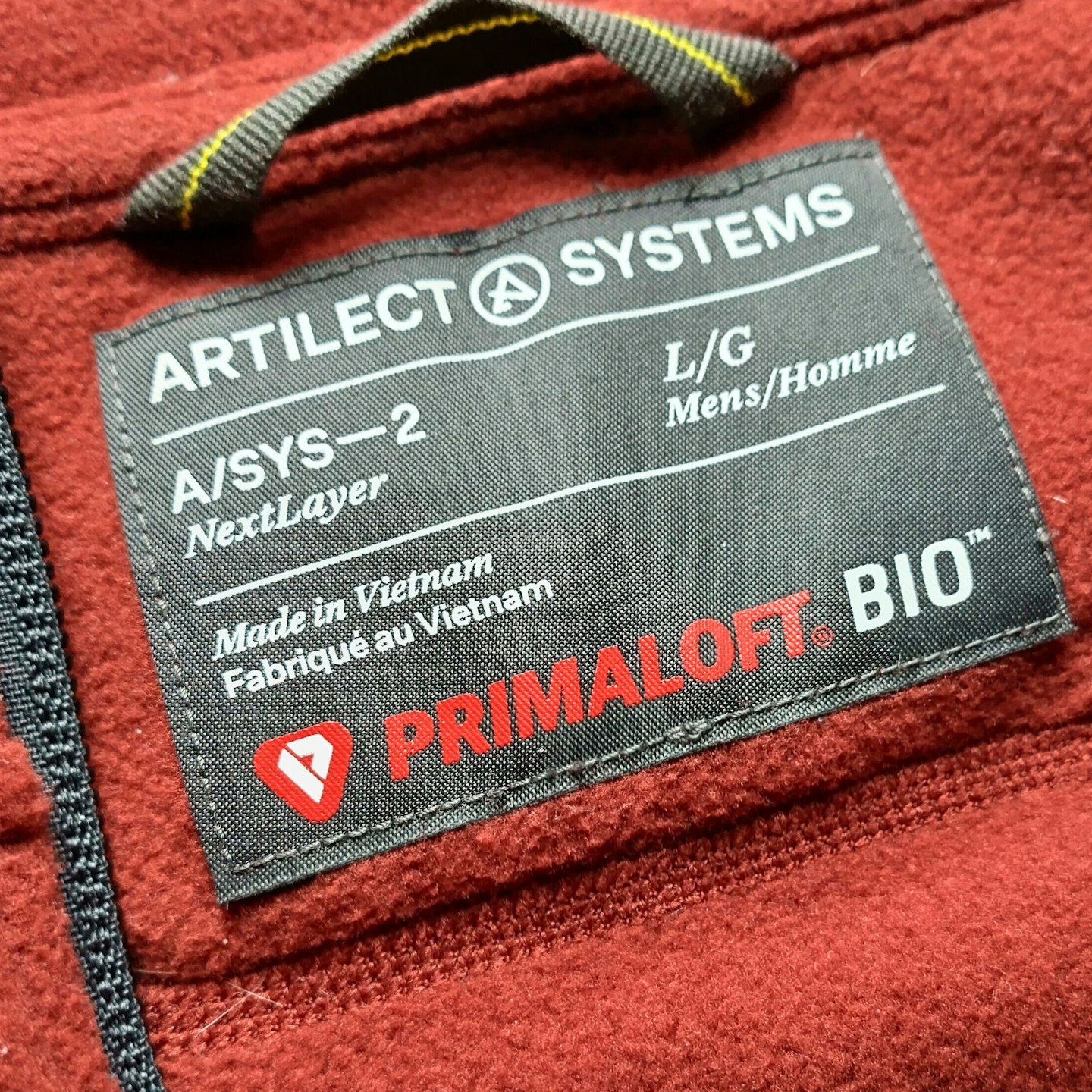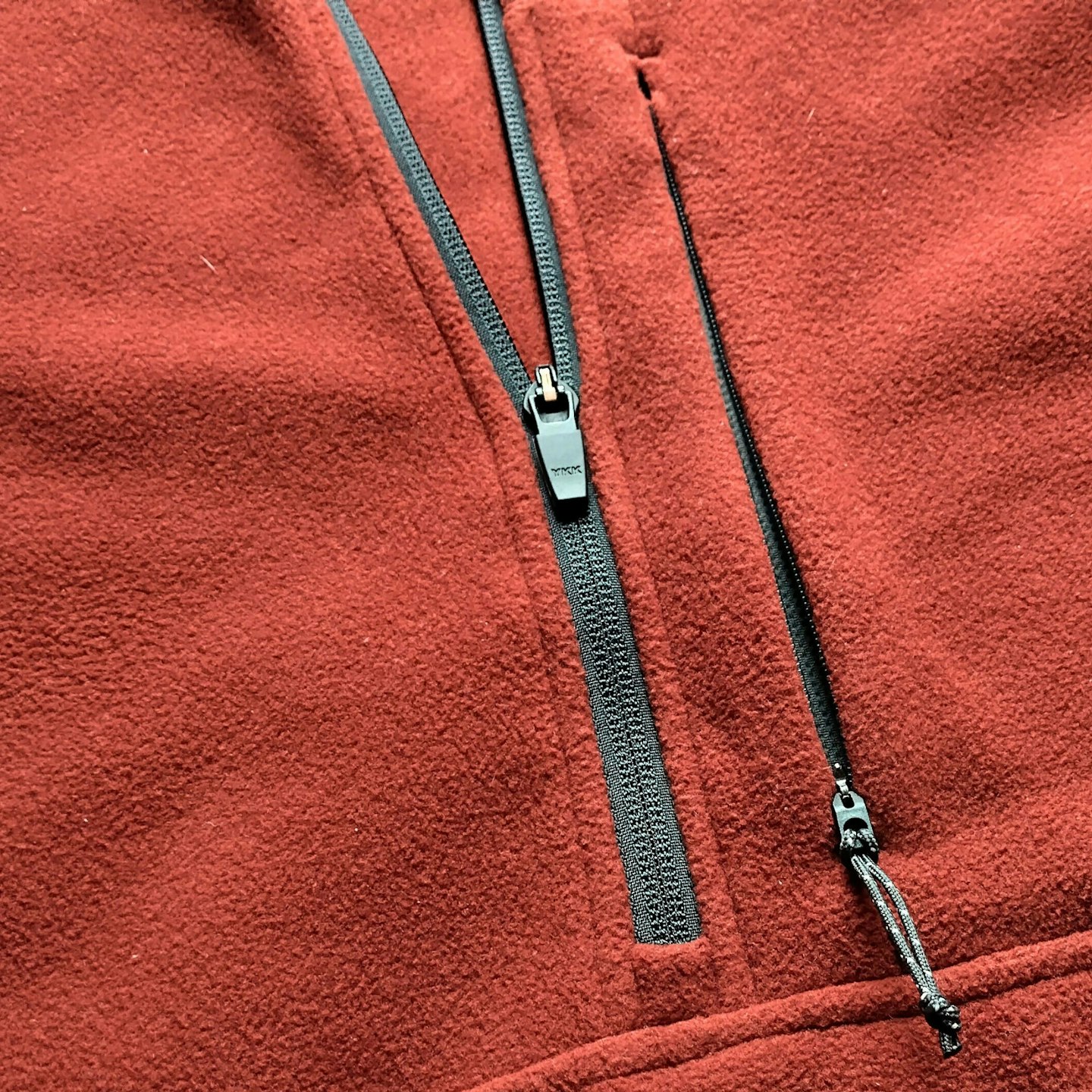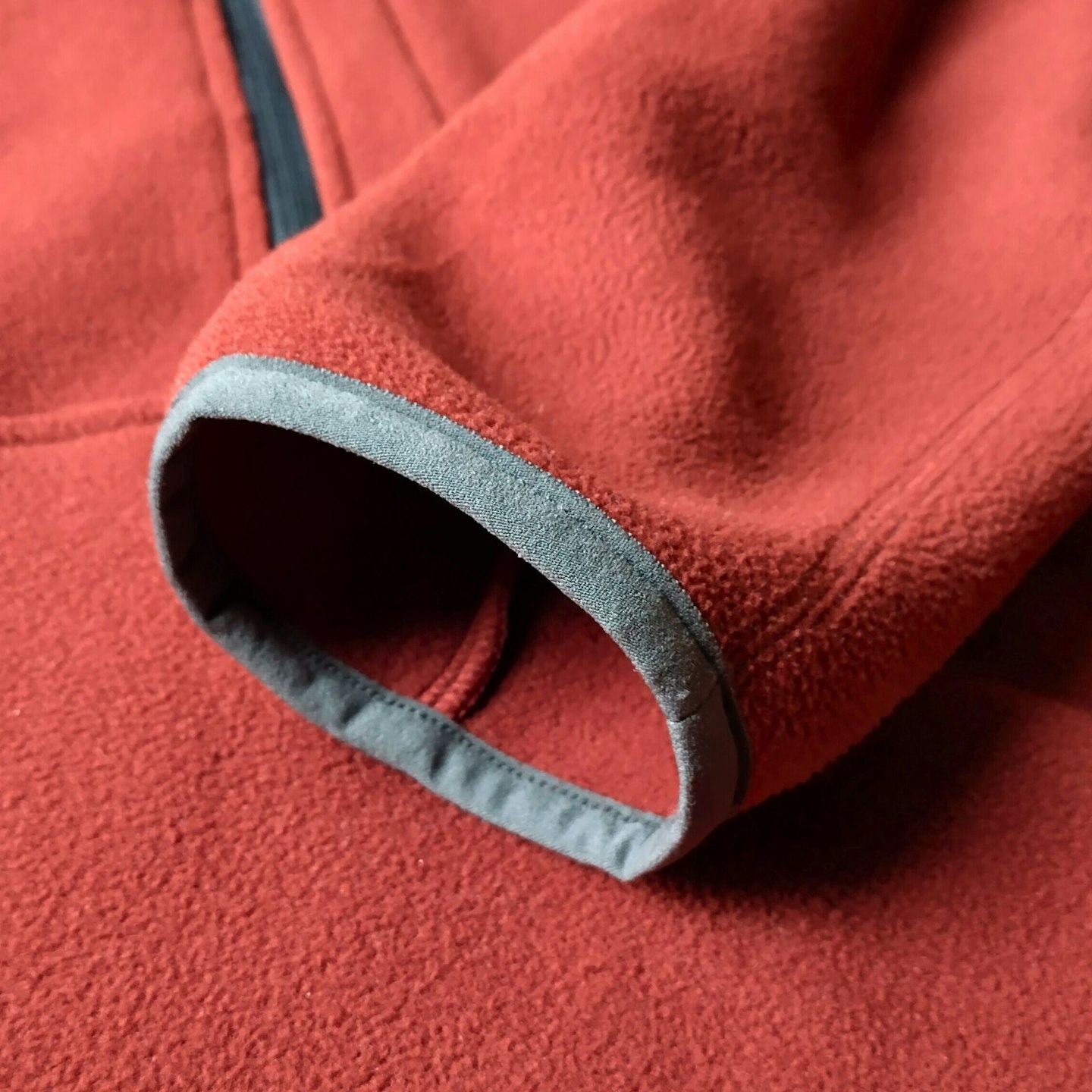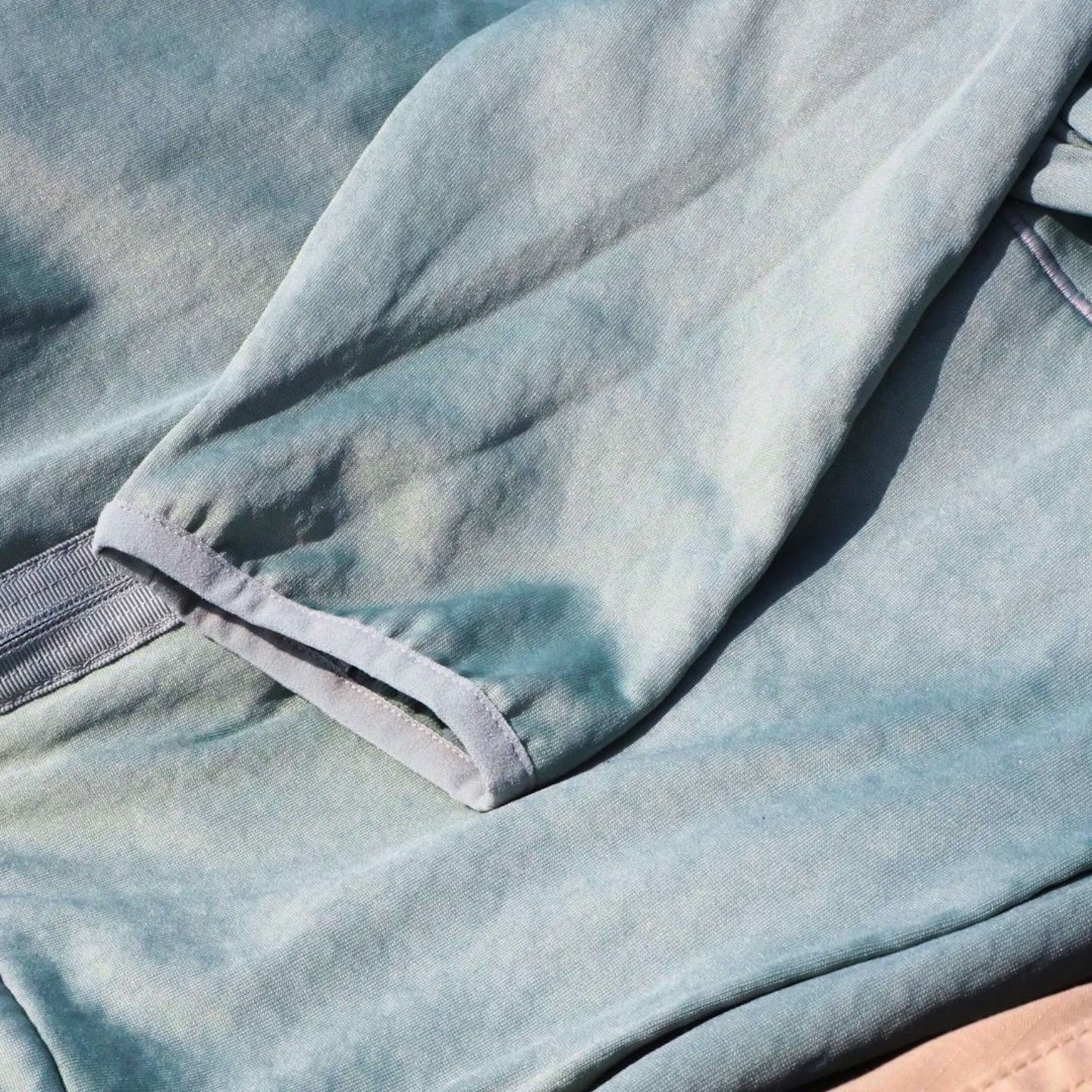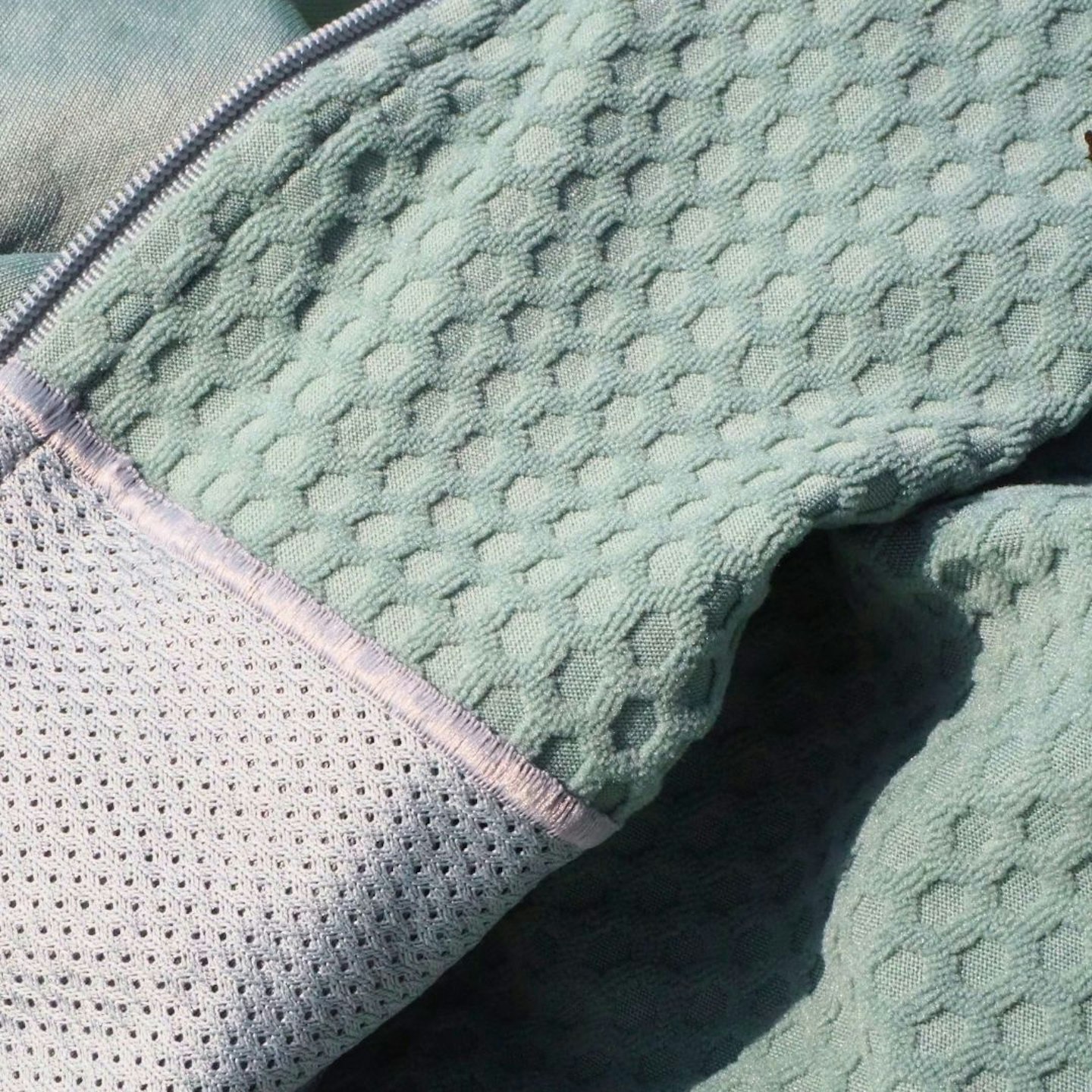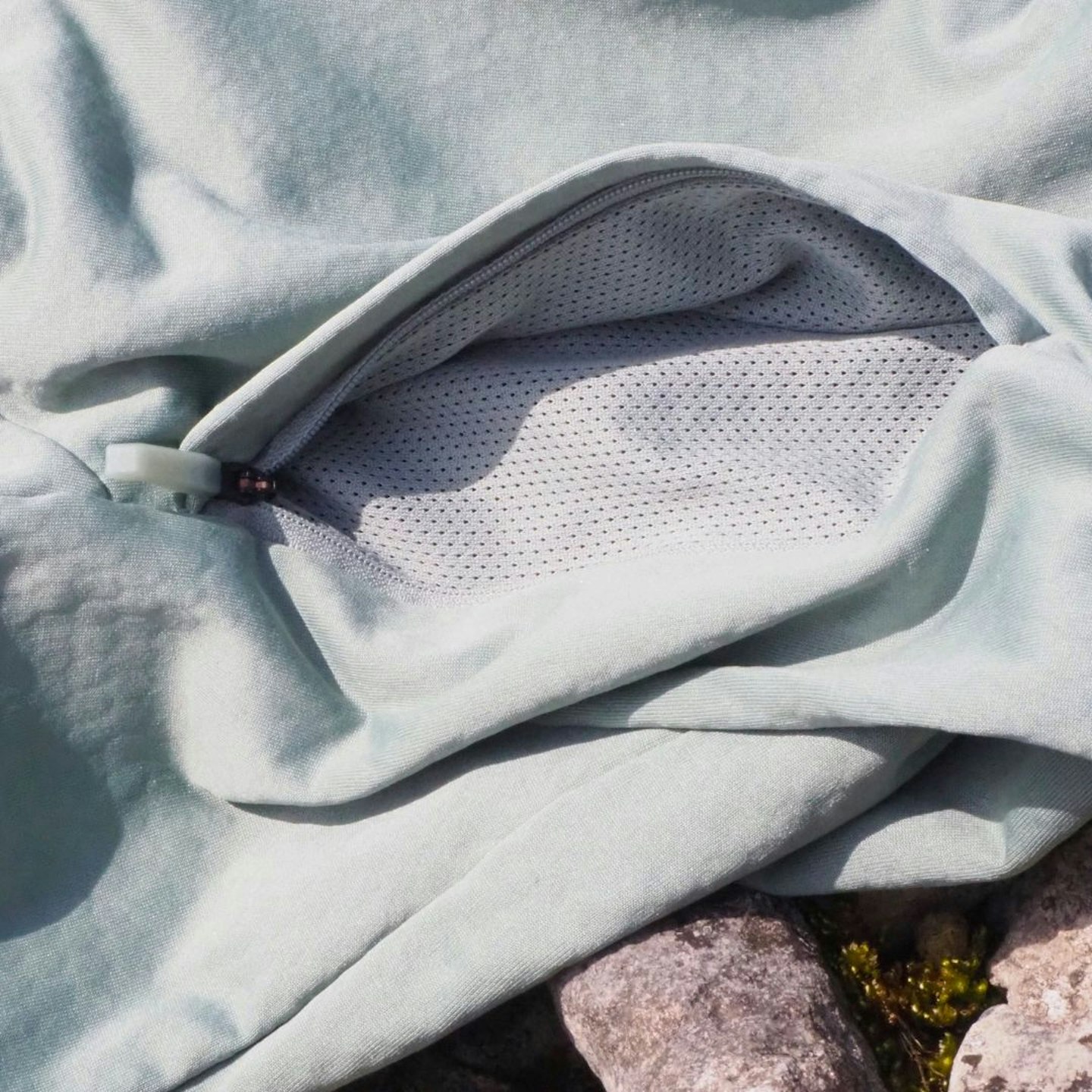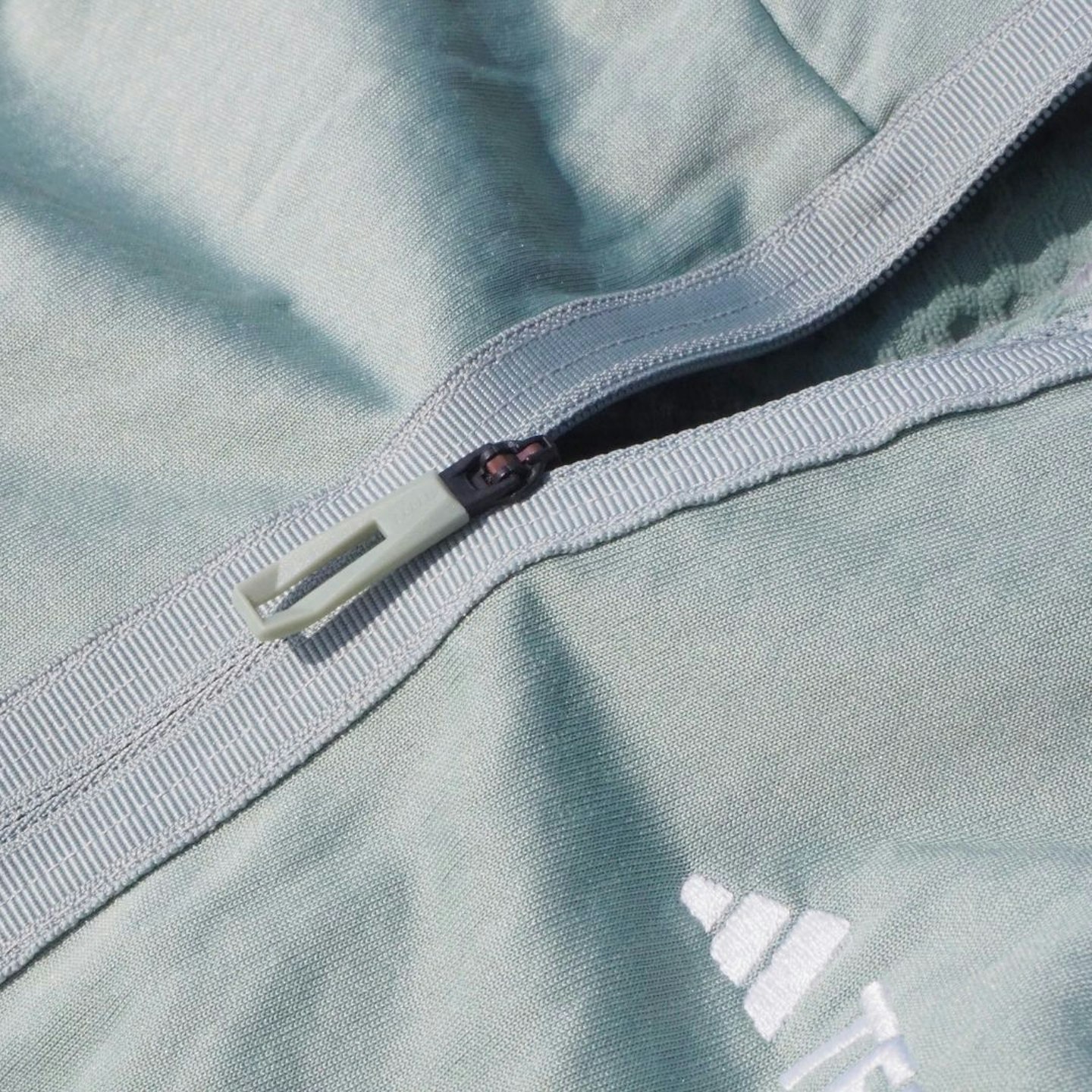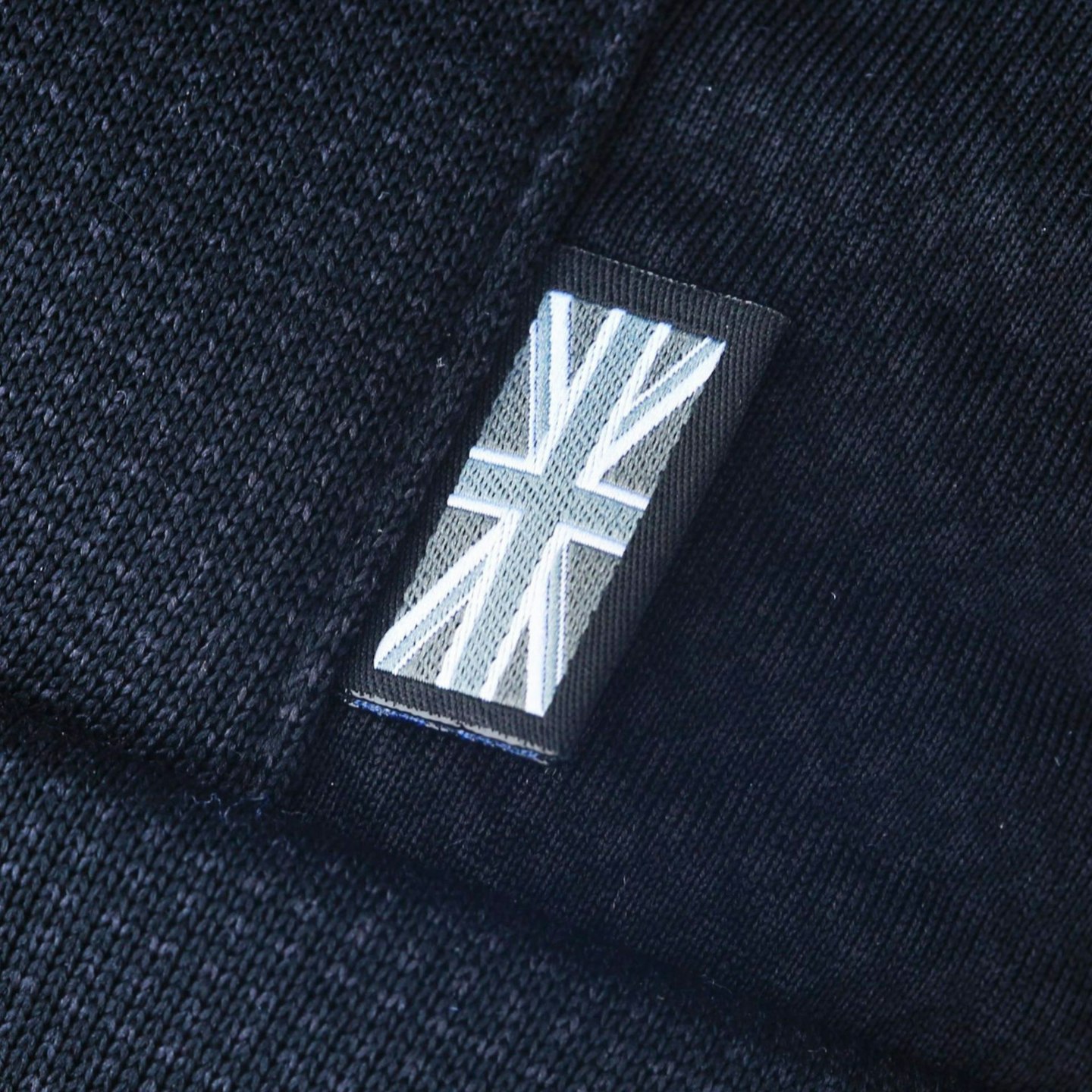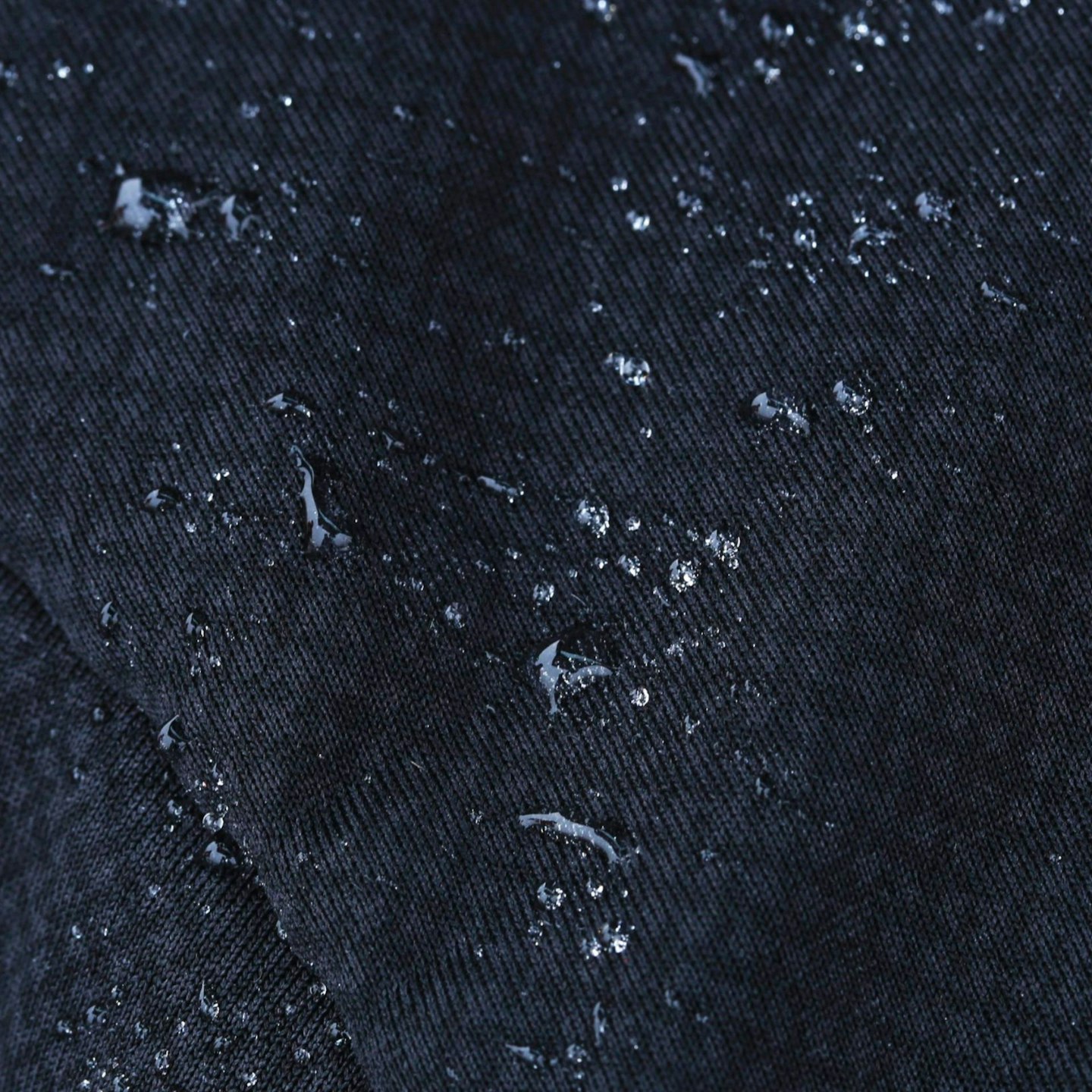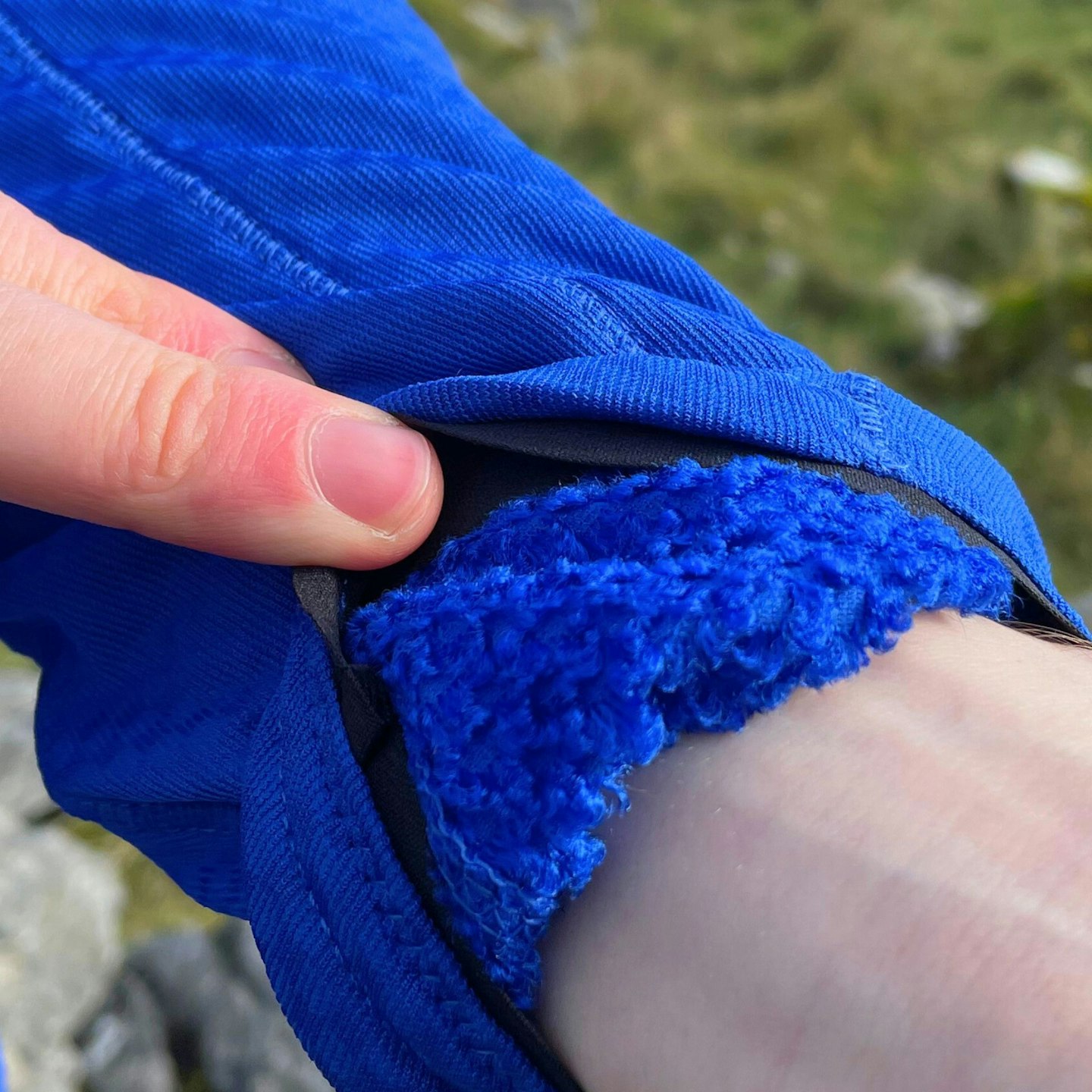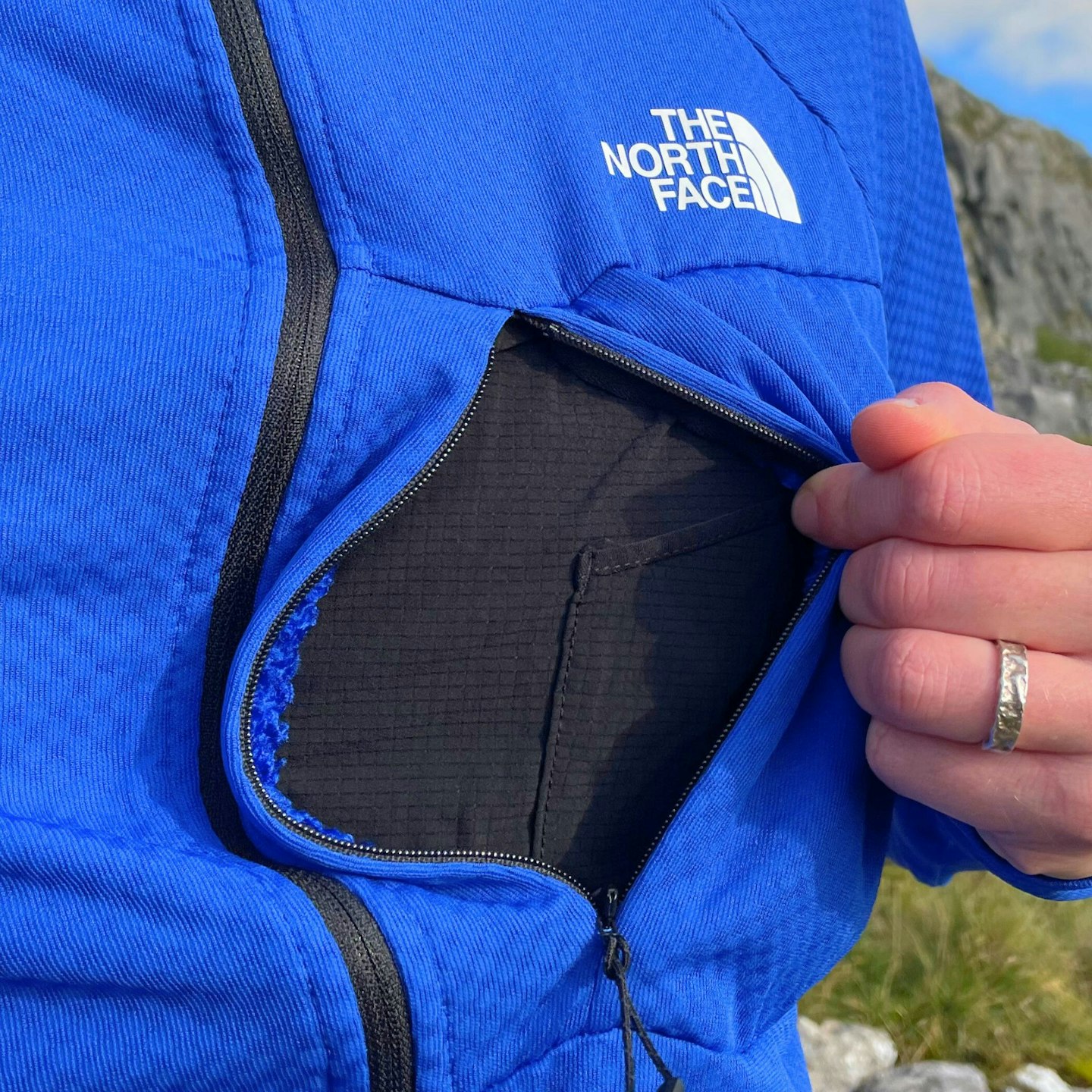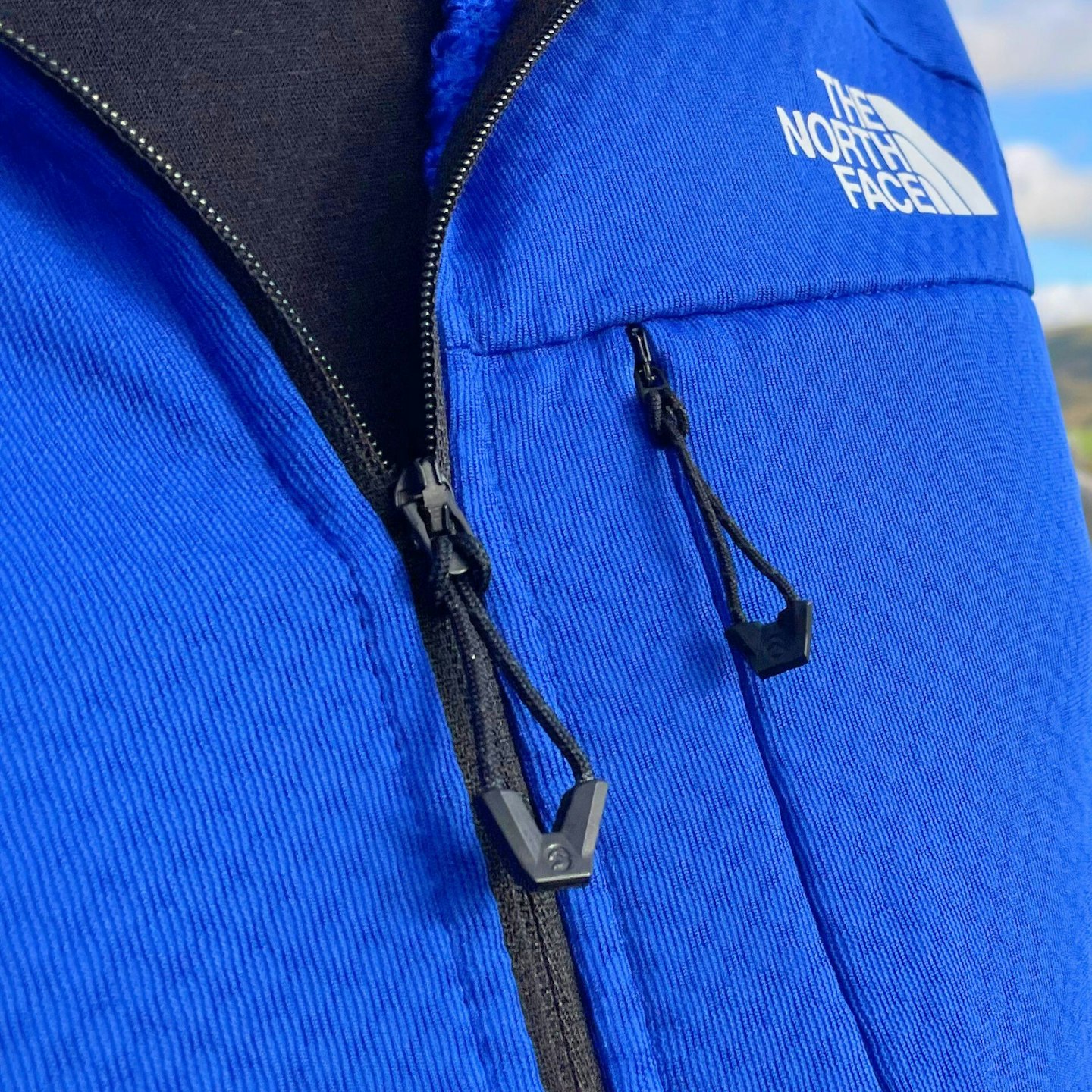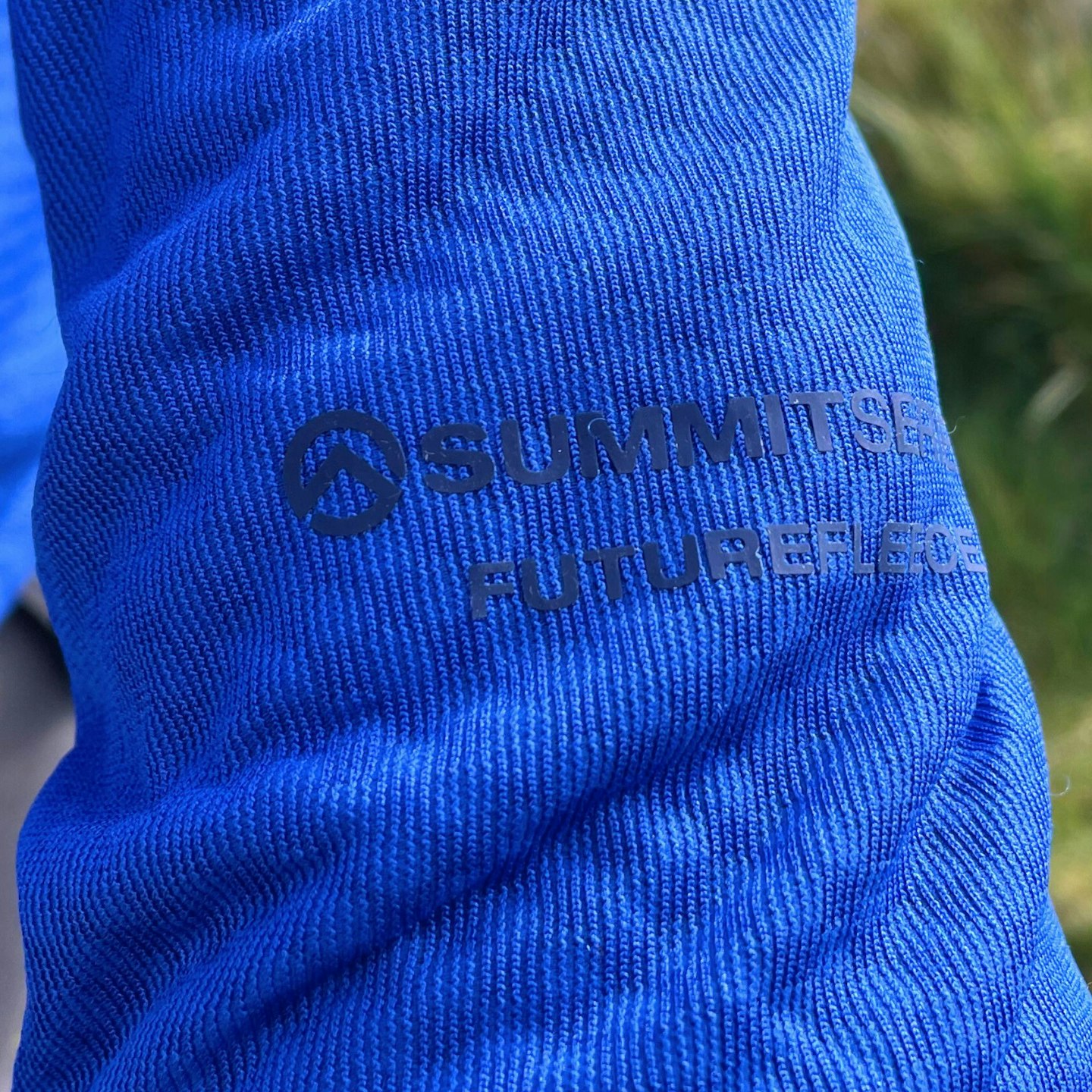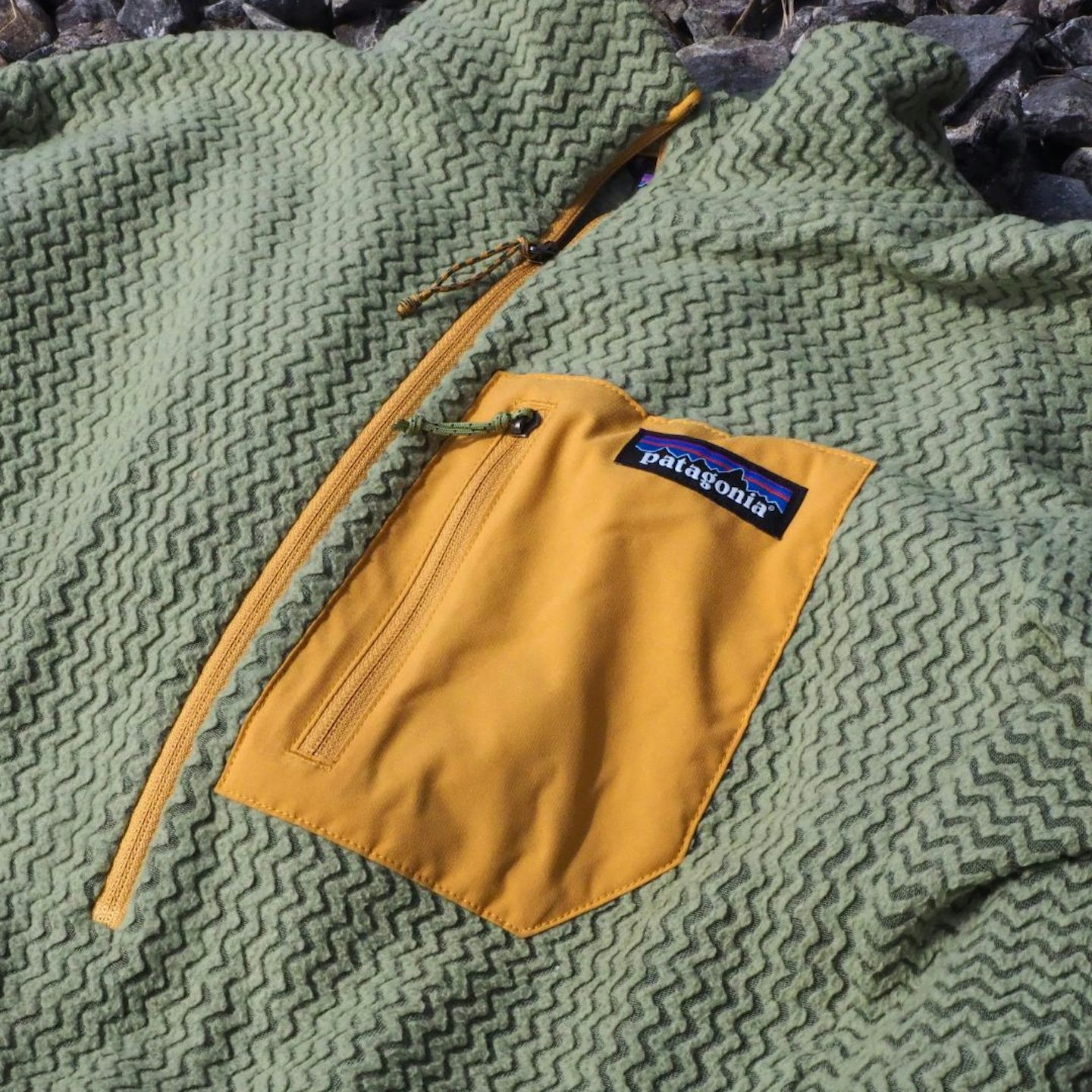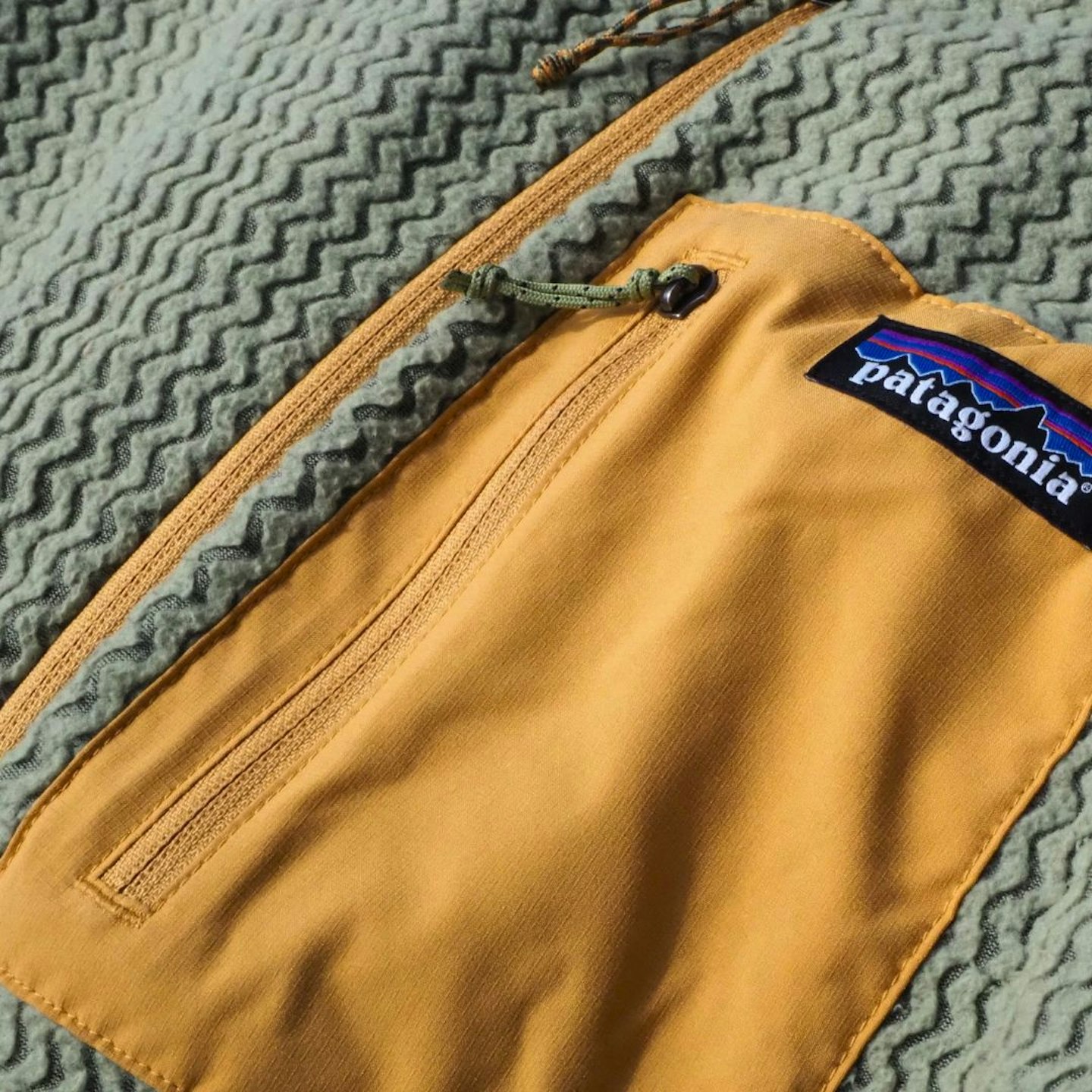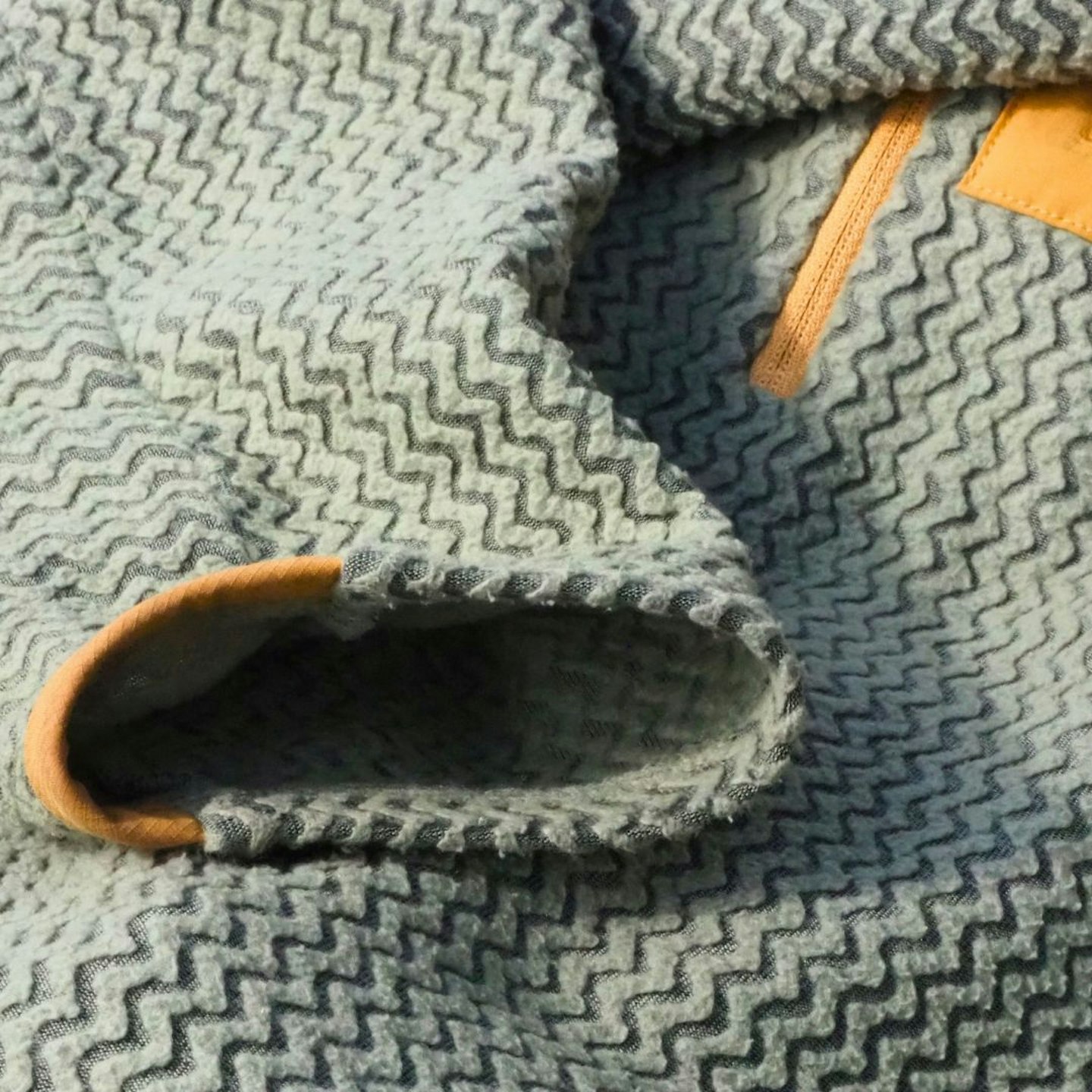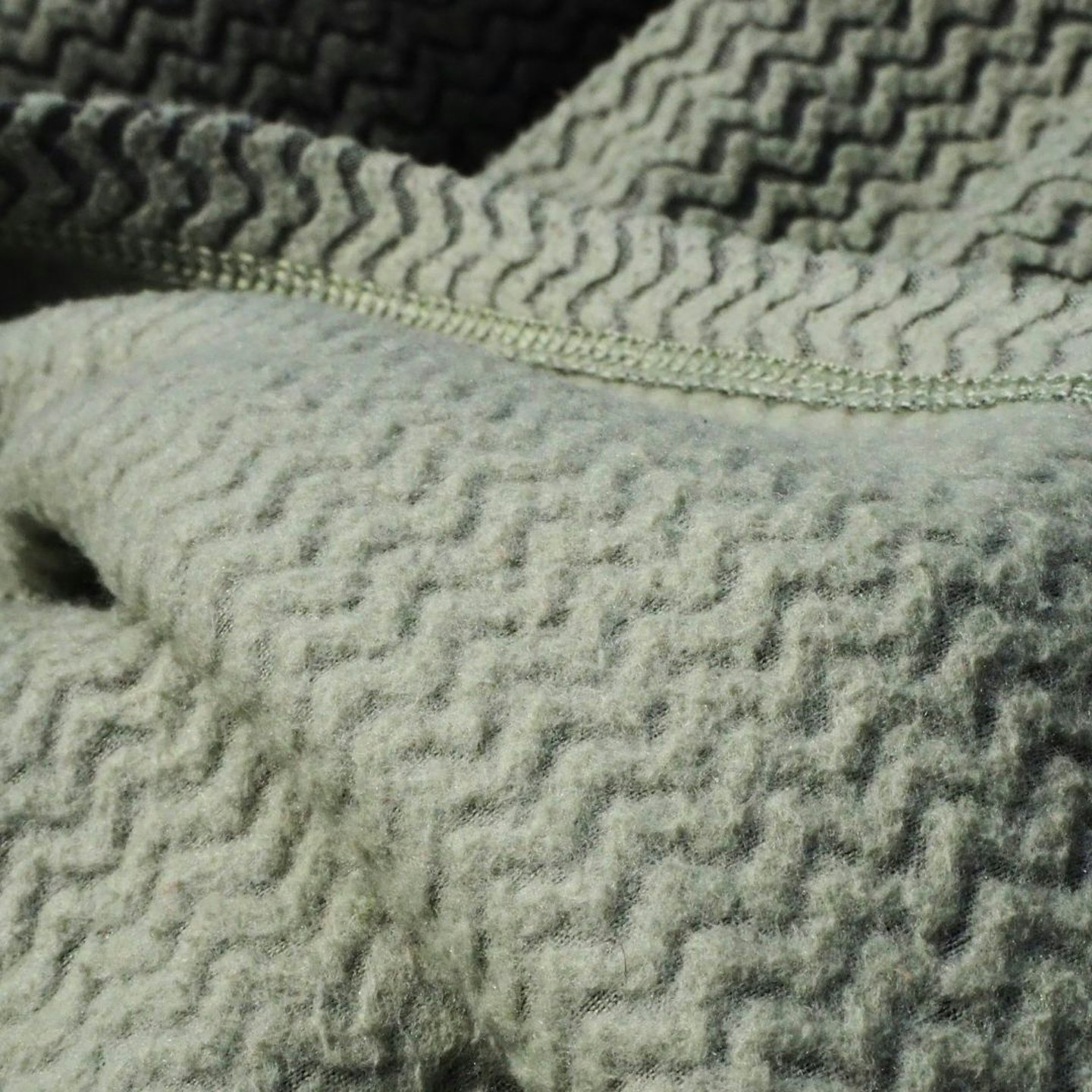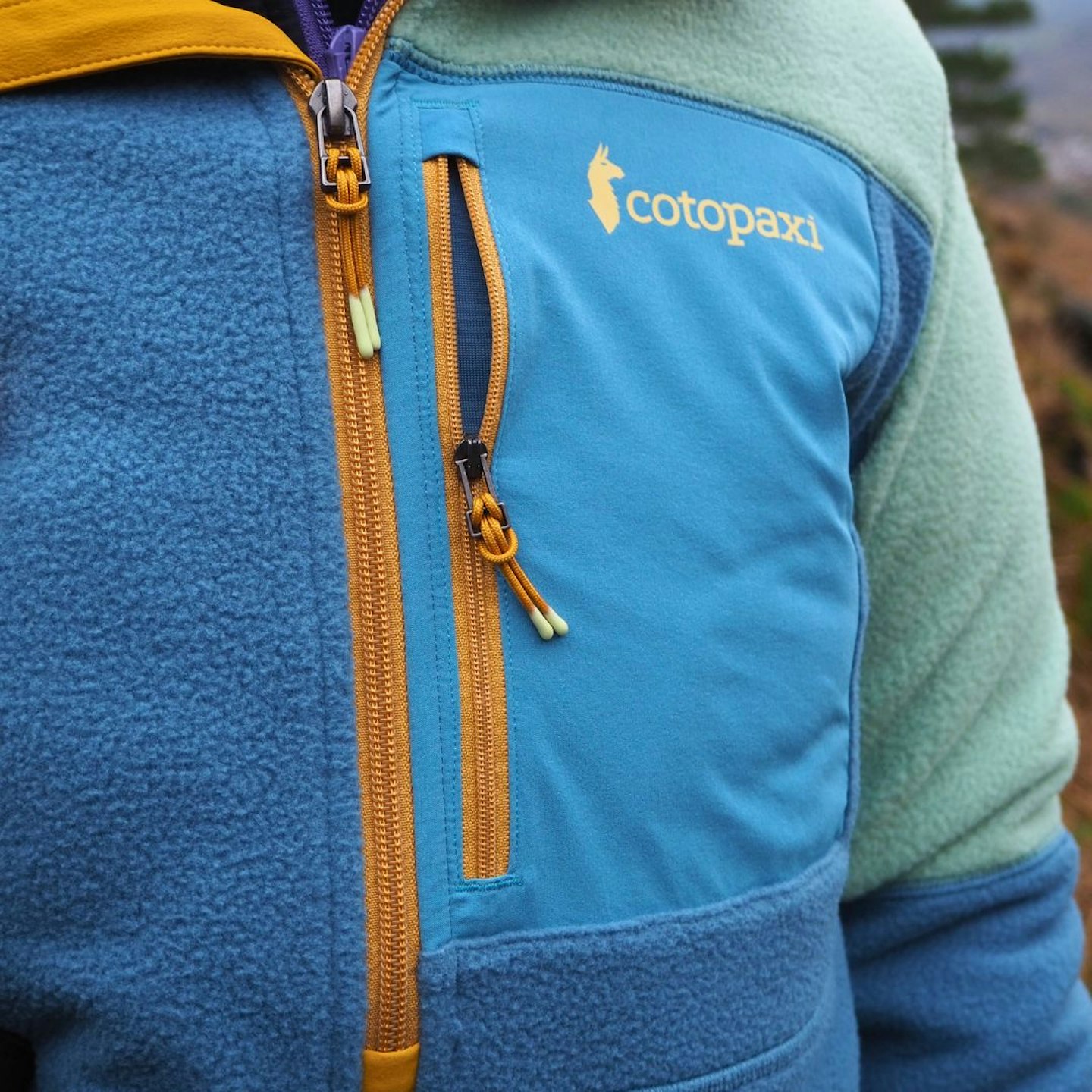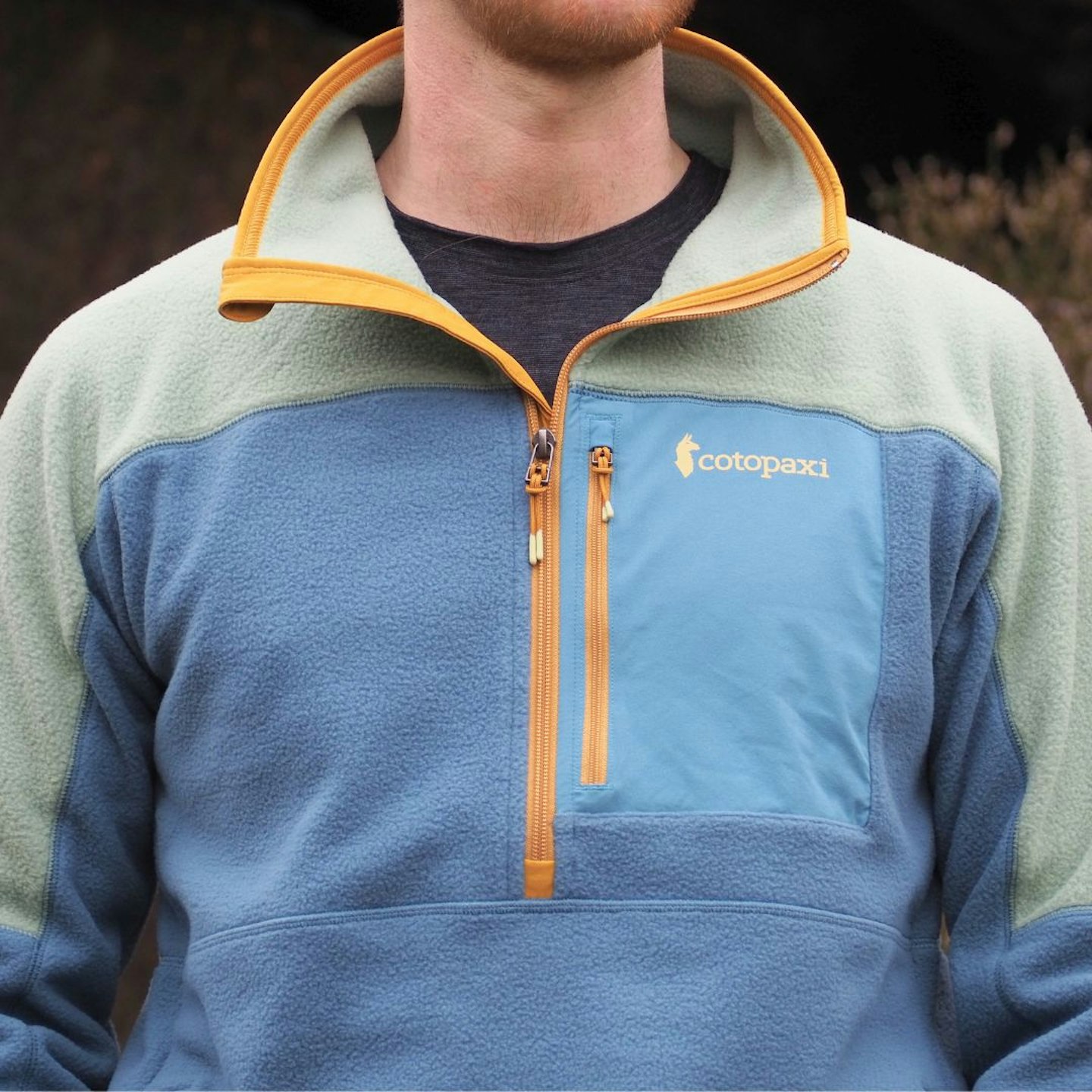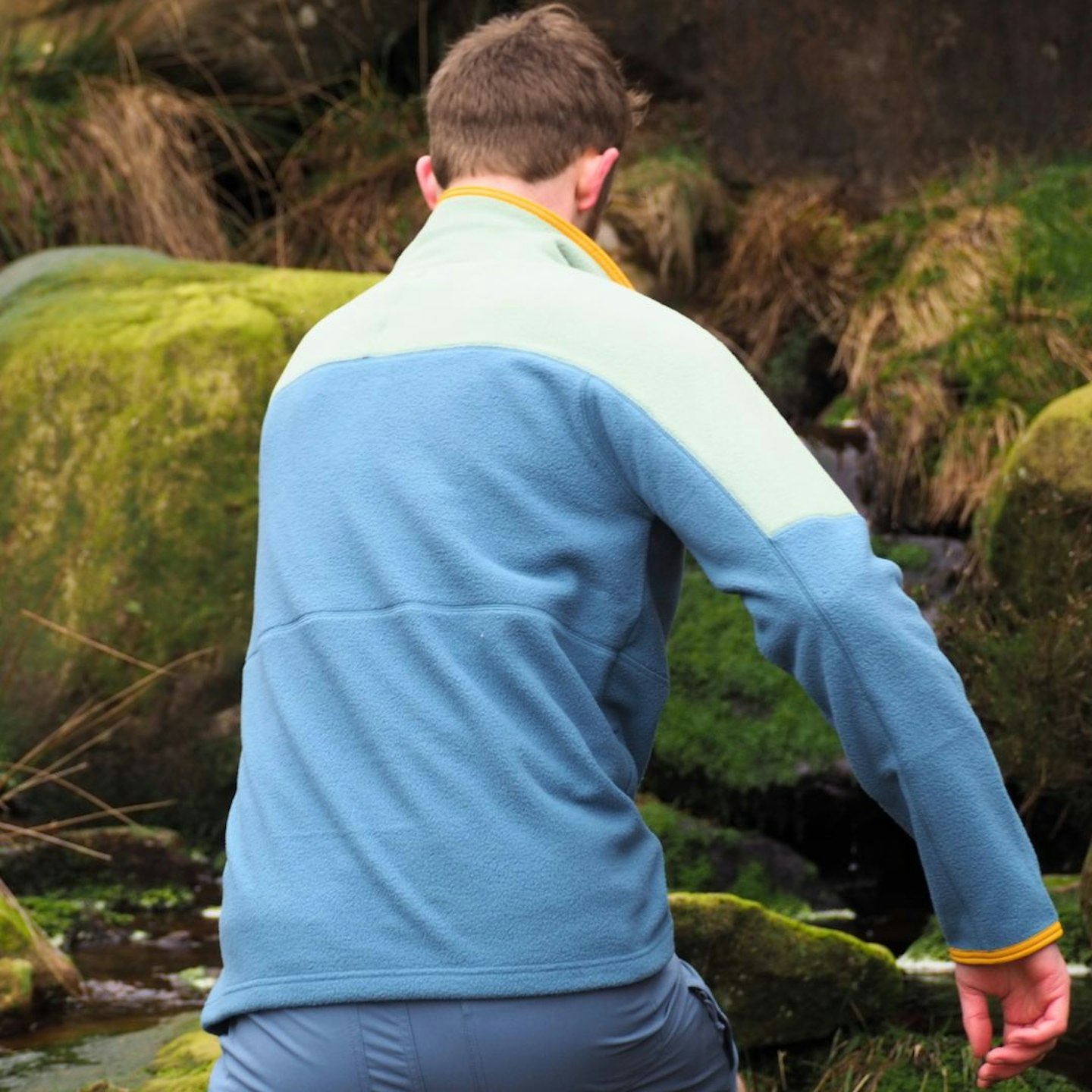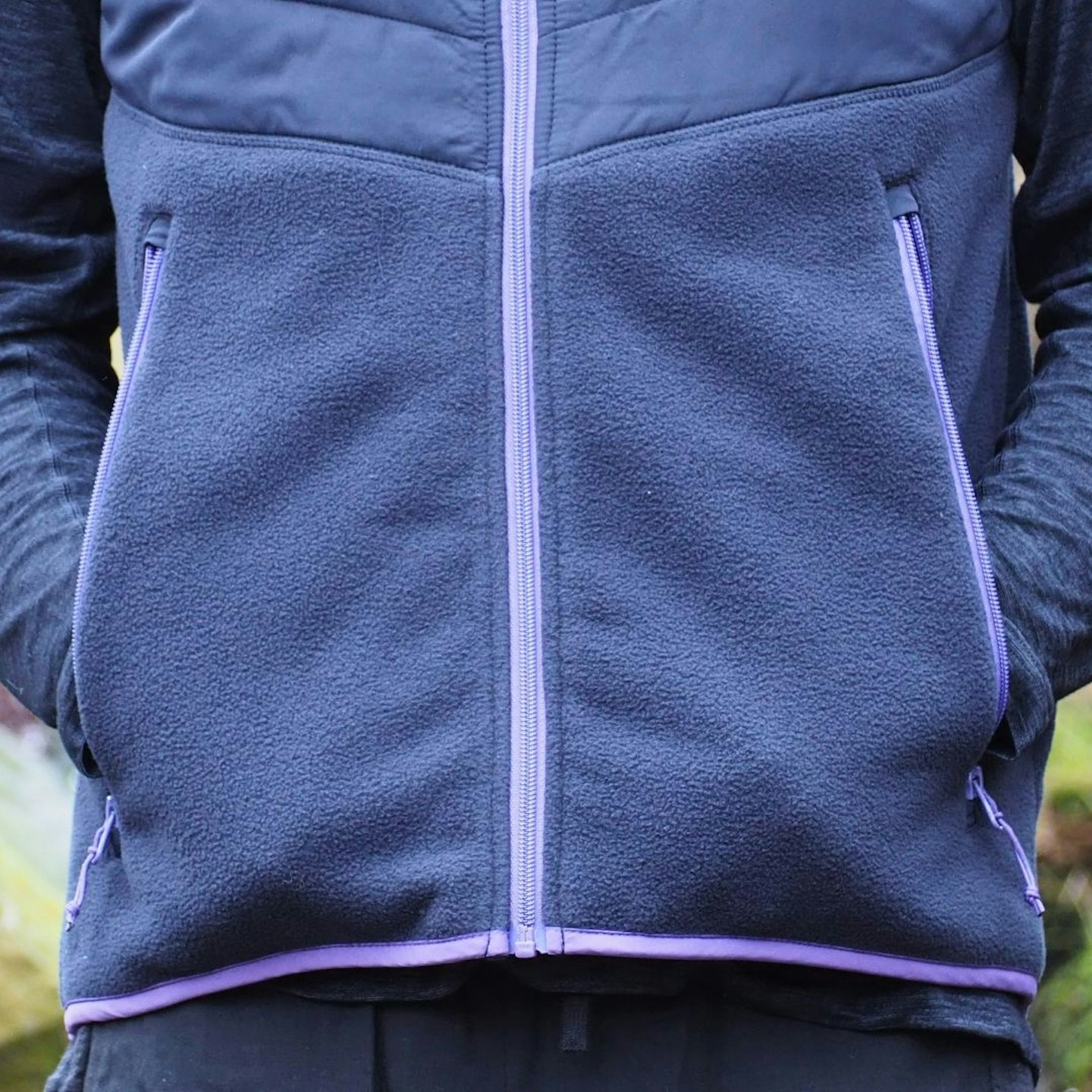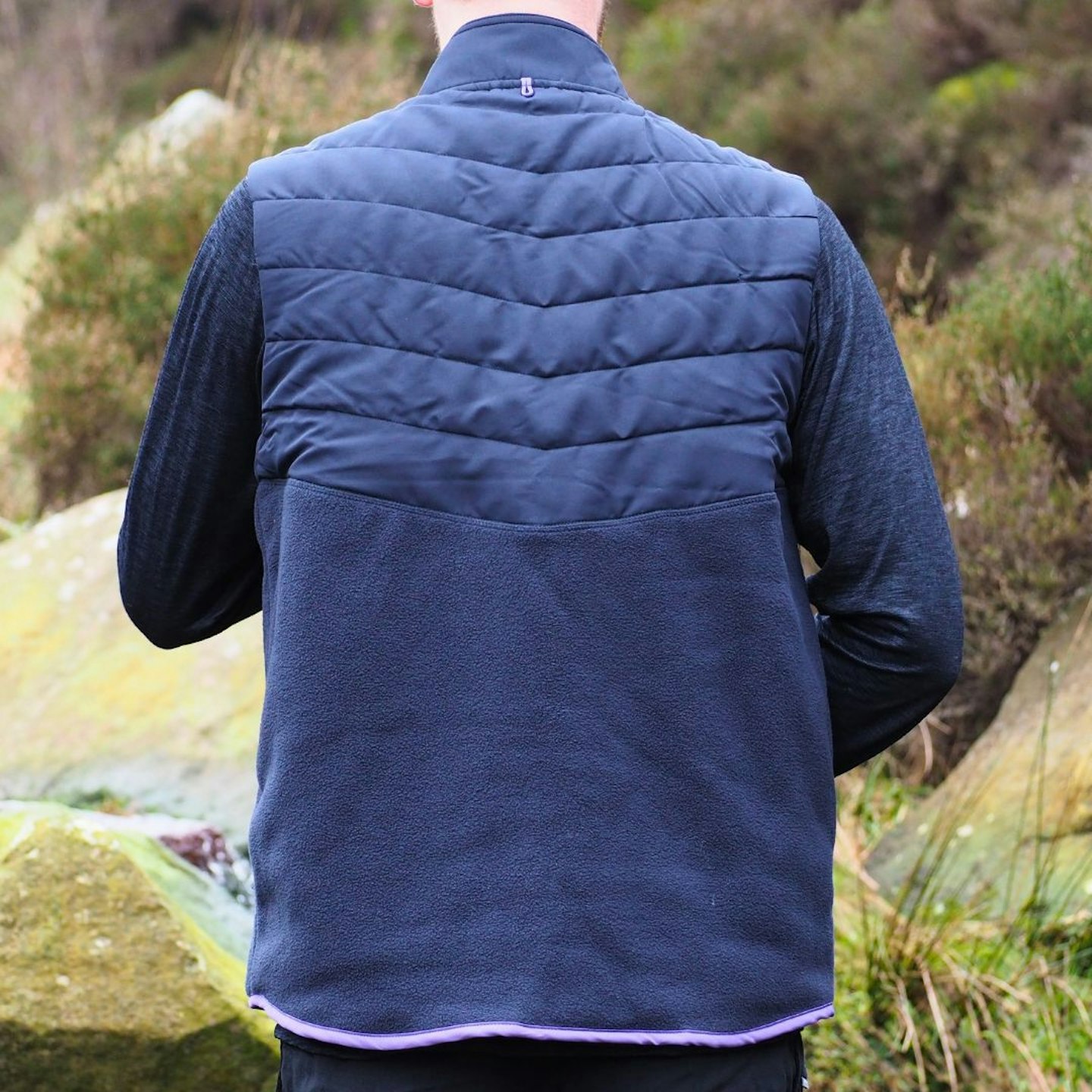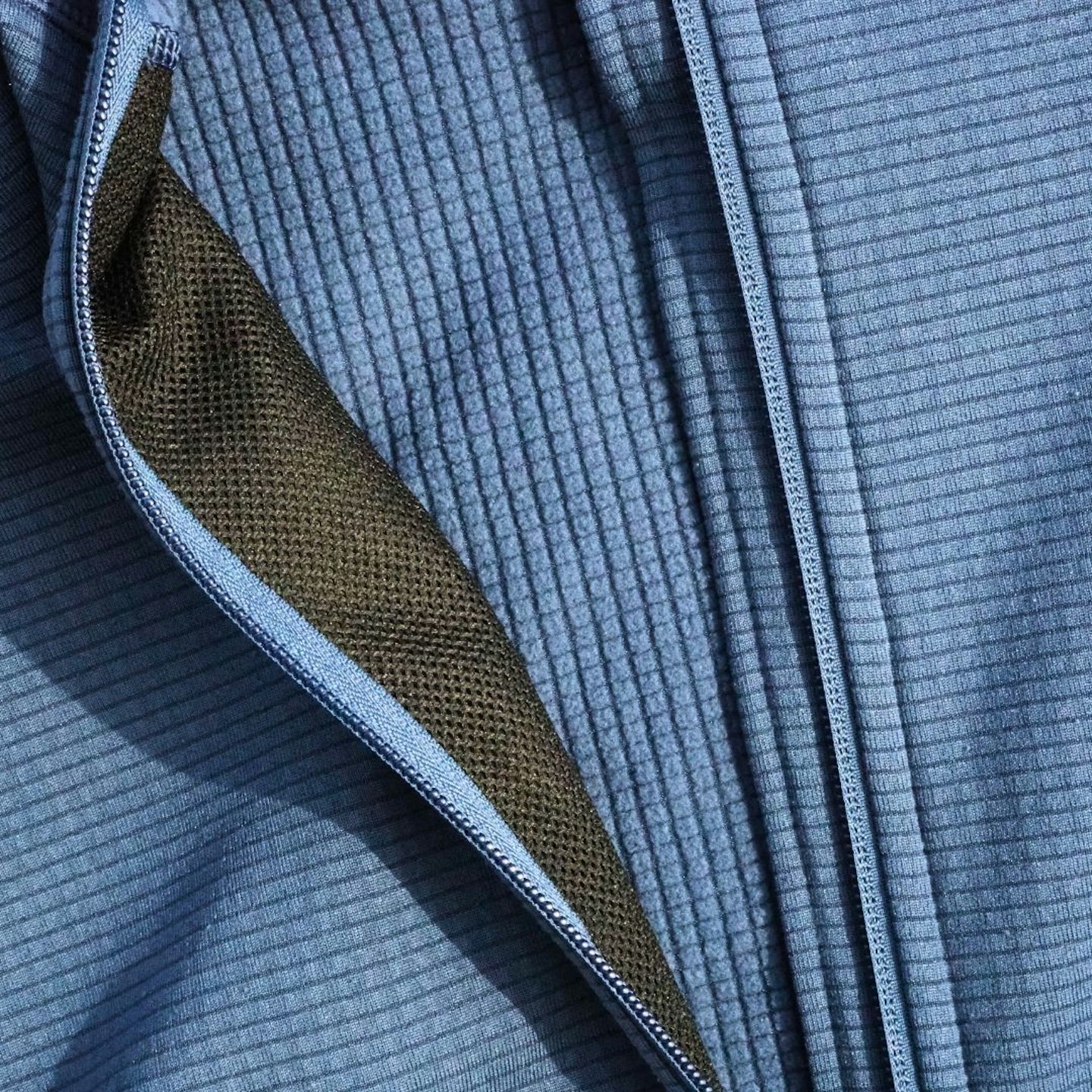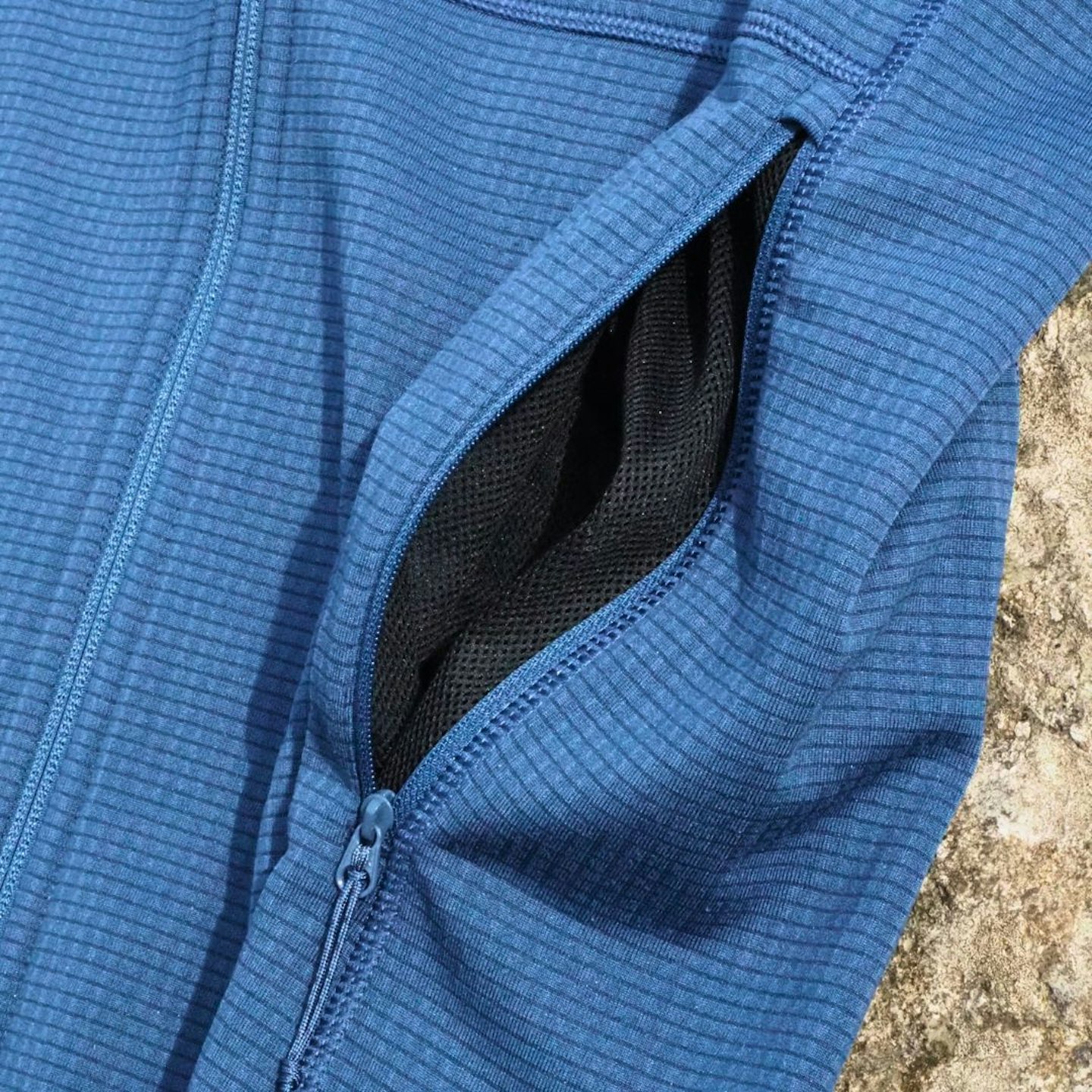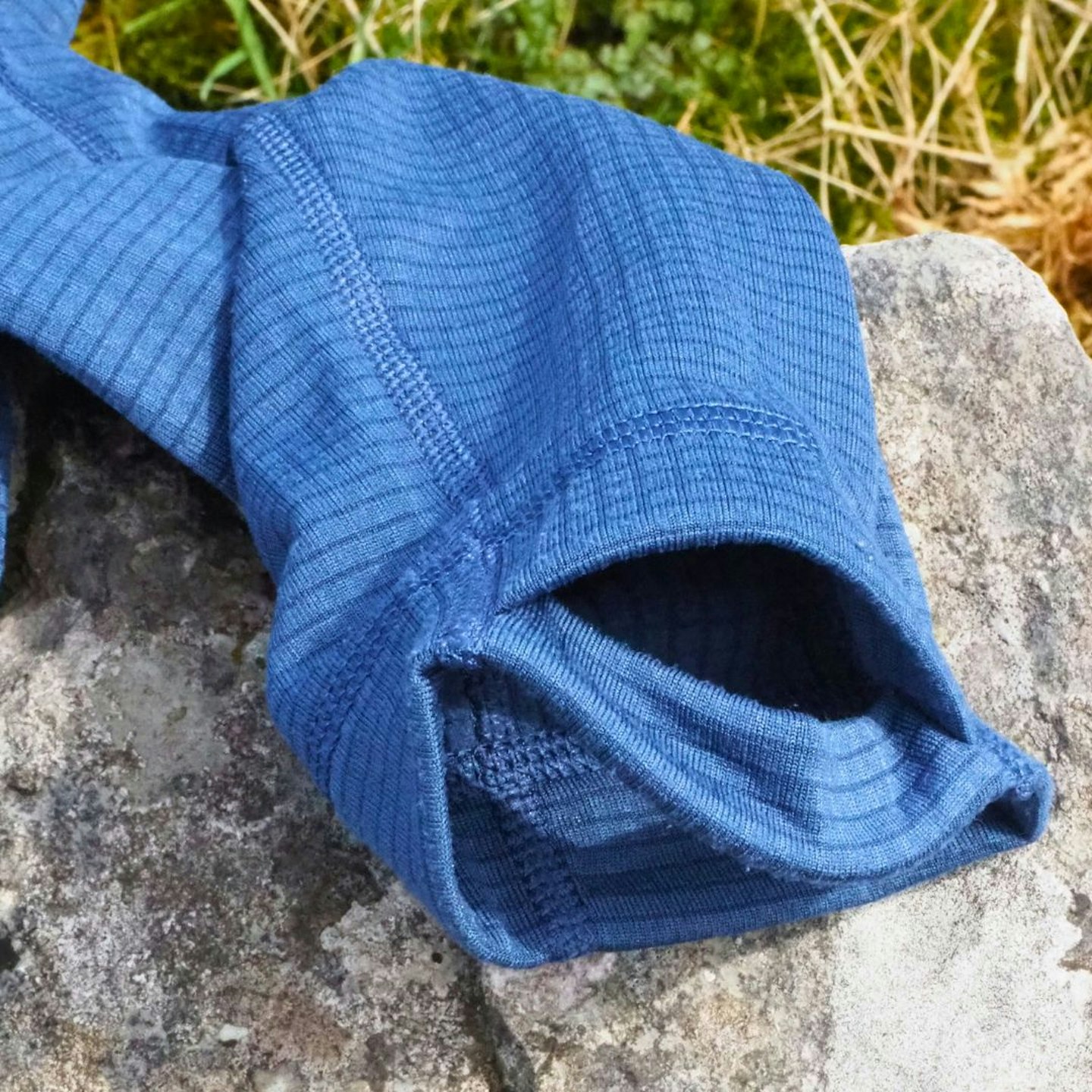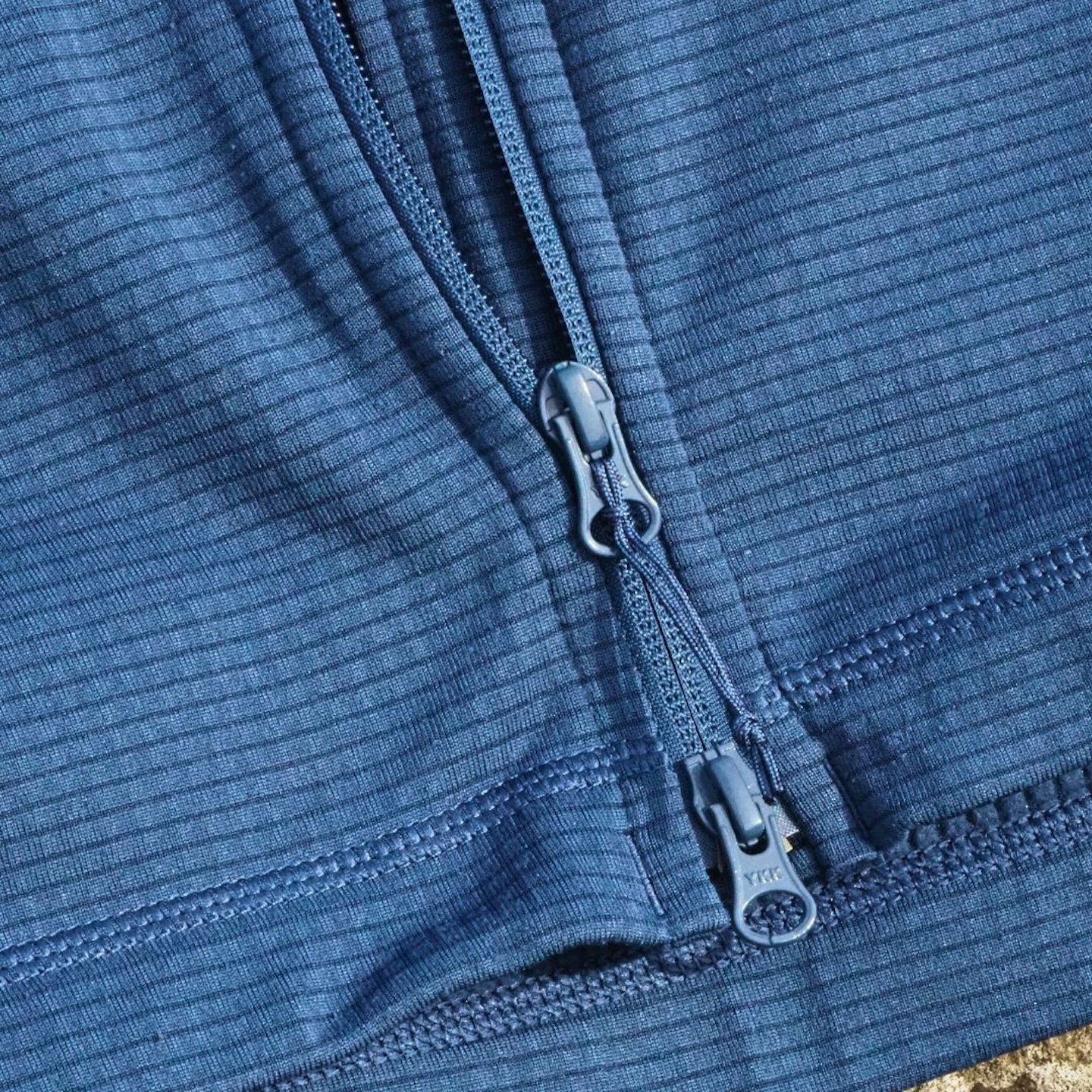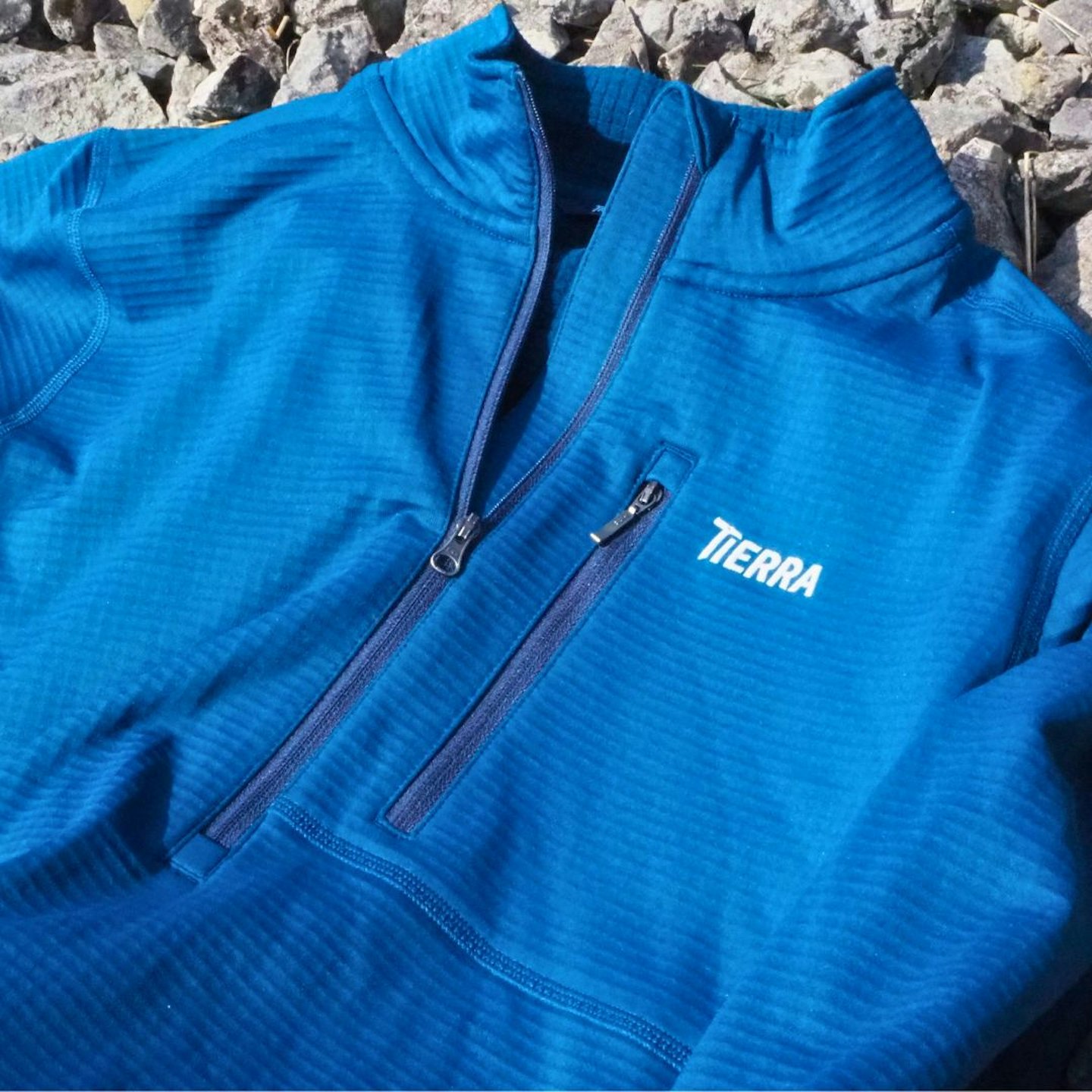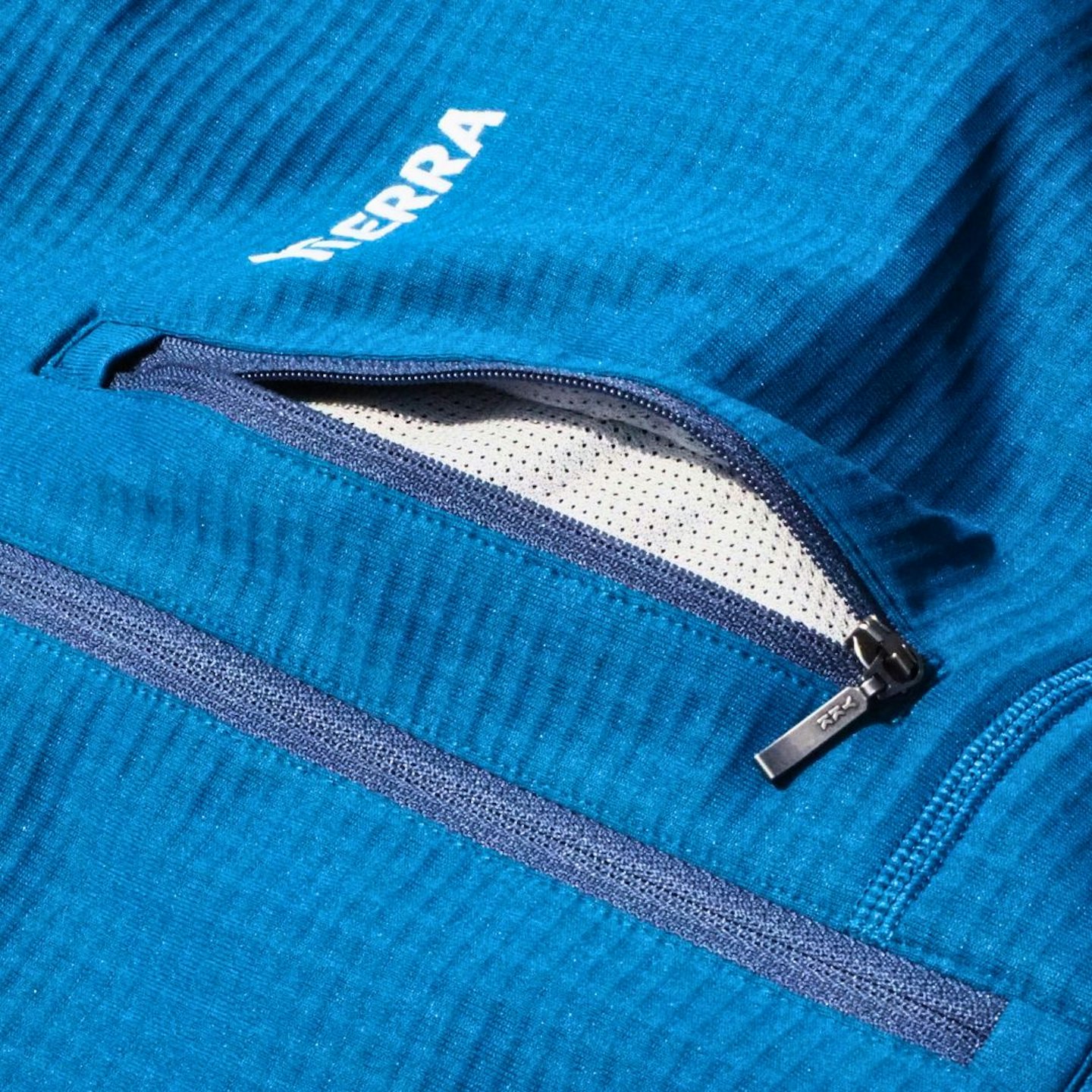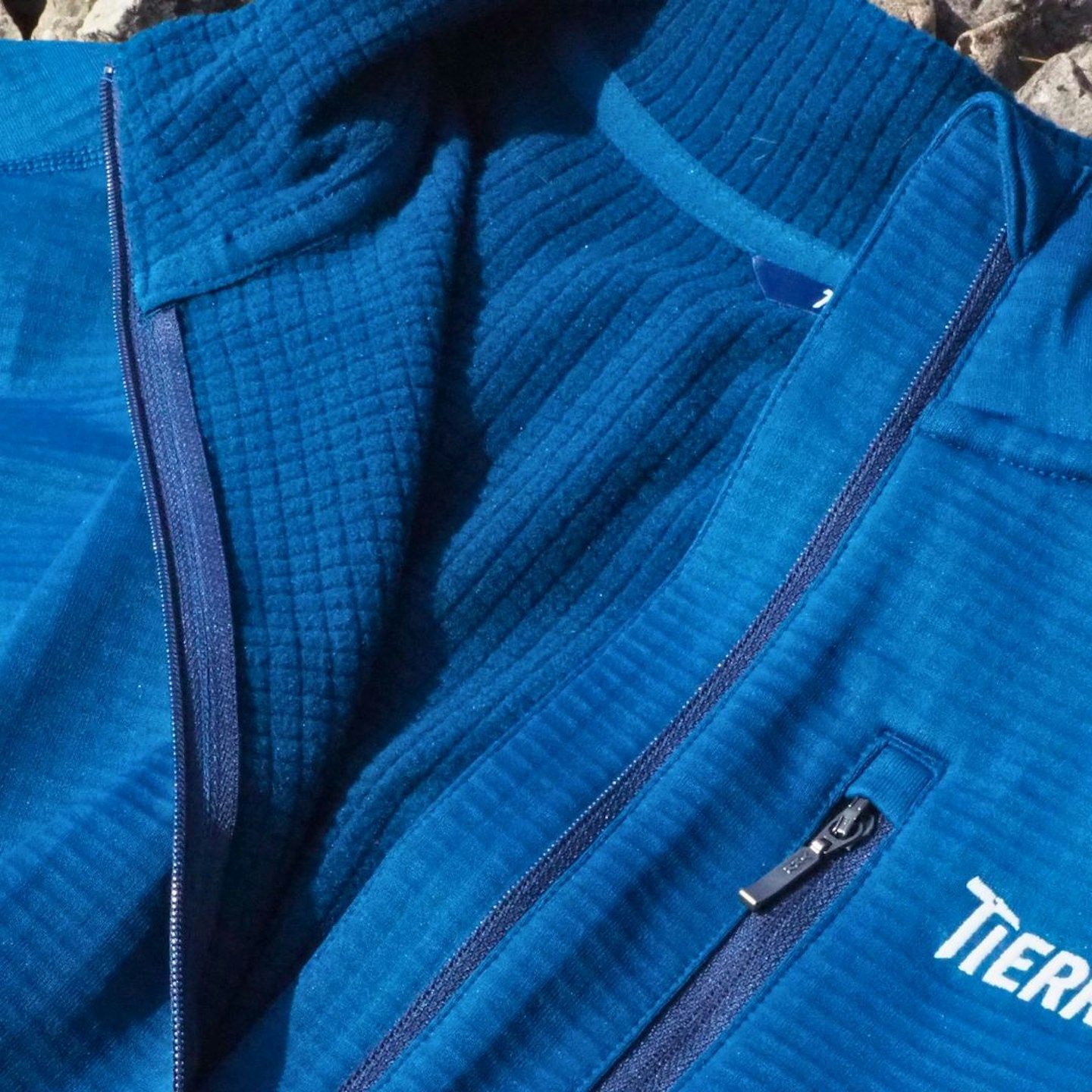When it comes to hiking jackets, especially mid layers, one fabric rules supreme: fleece. First developed in the late 1970s, this synthetic fabric was lighter and softer than wool. It's also much cheaper than down, and has a great warmth-to-weight ratio due to its large surface area trapping air against the skin.
Most hiking fleeces make a fantastic mid-layer option; cooler than an insulated jacket, but warm enough - and breathable enough to keep you comfy on the uphills in colder weather. We think having two or three in your hiking wardrobe is a good idea: a light one for summer breezes, a medium all-rounder and a deep pile one for cosy winter camping, for example.
What are the best fleece jackets of 2024?
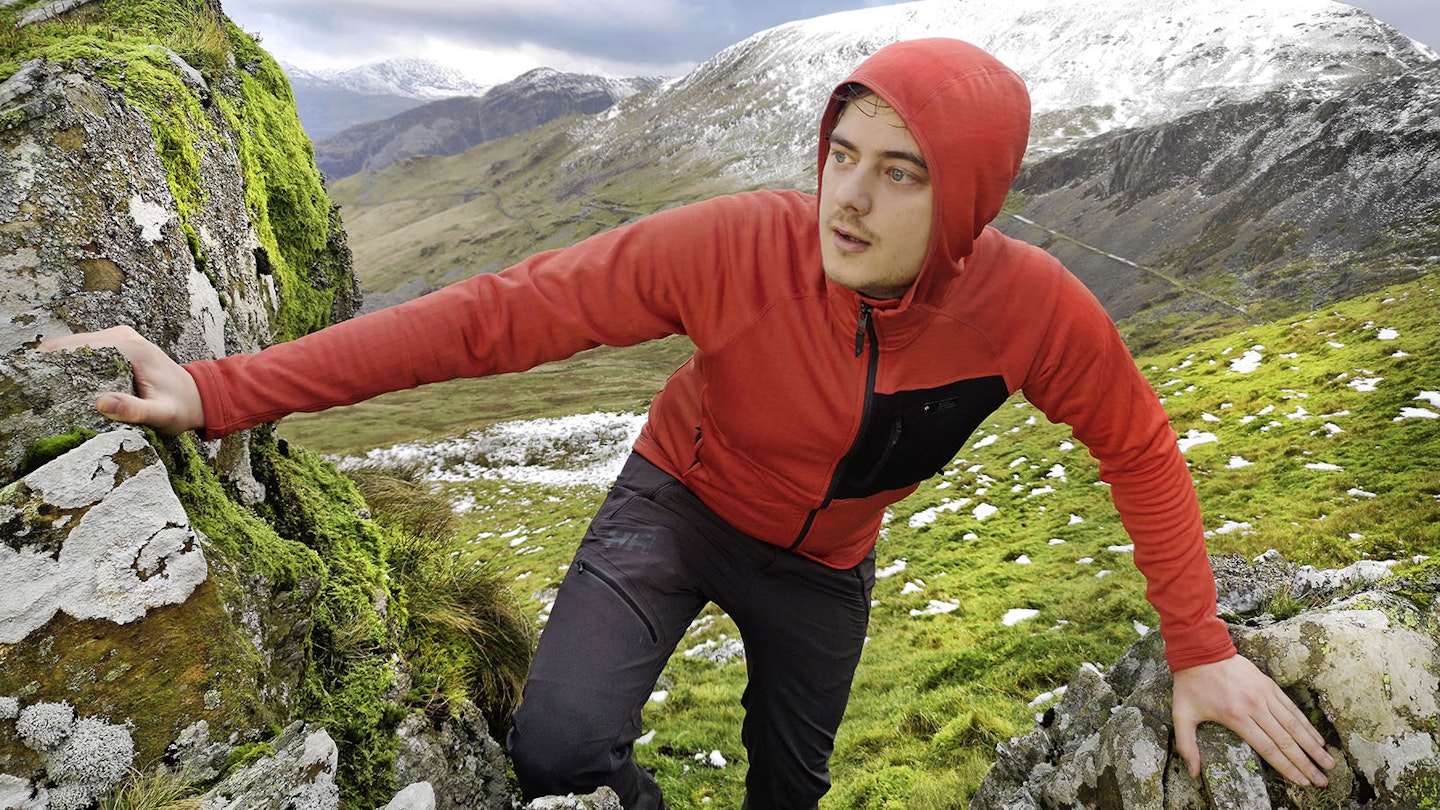
What are the best fleece jackets of 2024?
From lightweight, breathable gridded microfleece tops to uber-cosy, high-loft fleece hoodies, fleeces range from technical outerwear to an everyday wardrobe staple. Almost every outdoor apparel brand makes fleece jackets, which means there are hundreds of different options on the market today.
With an almost overwhelming choice out there, deciding which is best for you can prove difficult - especially as some are only differentiated by the price tag, or logo on the chest. Which is why here at LFTO, we've done the hard work for you, and have put many fleece jackets to the test over the years brining you a roundup of the best of the best for 2024.
How we tested the best fleece jackets
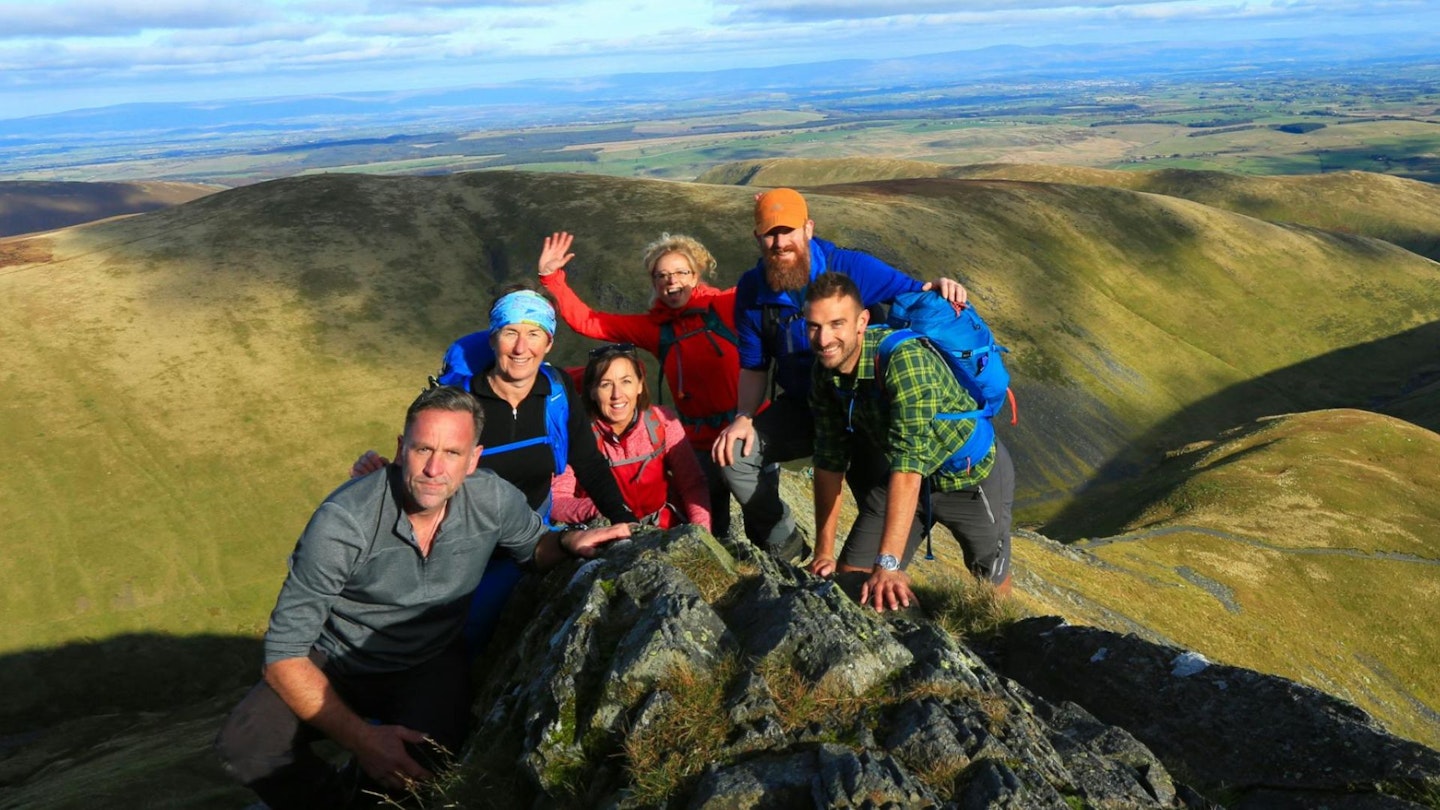
These fleece jackets were tested and reviewed by members of the Trail and LFTO team. We've been using and abusing fleeces for decades, and have gone though hundreds between us in our time - so we really know what separates the wheat from the chaff. The following roundup includes a mix of our favourites: retro classics, uber-modern materials, and some windproof options for blustery days too.
For outright warmth for weight, duck and goose down are the undisputed insulation champs. That’s why down is used for the warmest insulated winter jackets. But fleece is versatile. It's quicker drying than a heavy woolly pully or a down jacket. Most aren't particularly windproof but on the flip side, they can be very breathable.
Find out more about how we test gear HERE.
Best fleece jackets reviewed:
Craghoppers is a staple outdoor brand for many, but you wouldn’t necessarily consider it to be at the cutting edge of industry innovation. Before we get into what makes this Craghoppers fleece an exception, we want to say that our testing of it proved it to be a very reliable, comfortable, ‘classic’ style fleece that works well in a range of scenarios, from hiking to everyday use.
The CO2 Renu Fleece is partially made (30%) from Bio3 carbon smart polyester. This polyester is made from captured CO2 emissions from a steel mill in China and converted into ethanol. The ethanol is converted into the chemicals needed to make polyester fibres, which are then spun into fabric.
The remaining 70% of the fabric is made from recycled polyester, while the labels and zip-tape are all 100% recycled materials. To reduce waste, Craghoppers designed the CO2 Renu Fleece using a 3D design programme, which reduced the need for prototypes. By changing the construction of the fleece to lapped seams it has also been able to minimise material waste in the production process too.
There are men’s and women’s versions, with half and full zip models of each. In all, this is a good, reliable fleece at an excellent price, and one that breaks new ground in the sustainability of hiking apparel.
Check out the women's version here
Read our full Craghoppers CO2 Renu Half Zip Fleece review
Pros
- Well-priced
- Sustainable innovation
- Full zip option available
Cons
- Not a 'technical' fleece for more arduous adventures
| Weight | 305g |
| Fabric | 100% polyester (70% recycled, 30% Bio3 carbon smart polyester) |
| Men's sizes | S - 2XL |
| Women's sizes | 8 - 20 |
In our view, Montane has been one of the best producers of high-performing fleeces for some time and its Fury Lite Hooded Fleece Jacket is our current favourite.
It's simply everything you want from a fleece: warm yet breathable, durable, reasonably well priced, and comfortable.
We found the fit to be slim but the four-way stretch allows for excellent freedom of movement. The hem is quite short too, which is benefitial for scrambling and climbing.
The Fury Lite Hooded Fleece Jacket is made from Montane's Thermo Stretch material, which is a soft, fleecy polyester lining paired to a tough nylon face material. It's excellent to wear and is highly breathable for more strenuous outings. It's not great as an insulating layer for when you're idle but that's not what the Fury Lite Hooded Fleece Jacket is designed for.
In terms of sustainability, the Fury Lite Fleece uses recyled polyester and Montane is a Fair Wear Foundation member, and offers a repair service for its gear.
Pros
- Well-priced
- Athletic fit with four-way stretch
- Good breathability
- Durable
- Non-hooded version also available
Cons
- Not very wind resistant
- Some might want a longer hem
| Weight | 310g |
| Fabric | Thermo Stretch (50% recycled polyester, 42% nylon, 8% elastane) |
| Men's sizes | S - 2XL |
| Women's sizes | 8 - 18 |
The Halfmoon Bio Fleece is made from post-consumer recycled plastic bottles, which are transformed into PrimaLoft Bio fleece. This innovative fabric is biodegradable in oceans, wastewater and landfills (the three main places fleece fibres usually end up), thus helping to reduce the impact of microfibres in our oceans.
The fleece is super-soft and smooth, with an almost velvety feel. Consequently, comfort and all-round warmth are impressive. Breathability is good and the fit strikes a nice middle ground – it’s bulk-free, ergonomic and athletic(ish), without being too tight or thin. Lycra wrist cuffs help seal in warmth, and a half zip boosts ventilation when required.
We liked this fleece a lot, not only for the planet-friendly benefits, but also for its performance, which thoroughly justifies its premium price. We could happily wear it all day, without any drop-off in comfort levels. There is a single, large hand pocket and a chest pocket, both zipped.
Pros
- Recycled, biodegradable fleece
- Innovative fabric
- All-day comfort
Cons
- Some might prefer a more 'technical' fleece
| Weight | 265g |
| Fabric | Bluesign-approved 160gsm Primaloft Bio (100% recycled) |
| Men's sizes | XS - 2XL |
| Women's sizes | XS - XL |
For those after an athletic, technical-style fleece whose price doesn't break into triple figures, this is for you.
Adidas proclaims this is its lightest mid layer. It certainly is quite light, weighing less than 250g. And it's also highly breathable, making it ideal for either high-intensity outings in cool conditions or as a just-in-case outer layer on warmer days.
We like the longer rear hem, which helps prevent it from riding up when you're wearing a pack. We also like the quality of construction. Adidas seems to have a knack for producing gear that outlasts rival products of a similar price.
There are two mesh-lined hand warmer pockets but no chest pocket. The main zip is one way but most fleece zips are. In terms of fit, the Xperior fleece is slim fitting and reasonably stretchy. This means it's also easy to layer underneath a hardshell.
Pros
- Lightweight and breathable
- Excellent fit and comfort
- Lots of colours available
Cons
- Other options are warmer
| Weight | 230g |
| Fabric | 94% recycled polyester, 6% elastane |
| Men's sizes | XS - 3XL |
| Women's sizes | XS - XL |
With its roots set firmly in mountain sports, it's perhaps no surprise this Black Diamond fleece excels in alpine and climbing settings.
It carries quite a premium price, particularly for the lightweight, no-fuss design, which about the only thing we don't like about the Coefficient Storm. Happily, however, it makes up for it somewhat in performance.
It's made from a partially recycled stretch fleece, which hugged us in a brilliantly comfy slim fit that allows for freedom of movement. It feels very athletic and light to wear.
Despite its lightweight construction we were also surprised how warm and weather resistance it is. The grid-shaped backing is the reason for the former, while a PFC-free DWR helps keep light precipitation at bay.
So, it's minimalist yet pricey, which can be hard to justify but we were seriously impressed with the Coefficient Storm Hoody's fit, comfort, and versatile performance.
Check out the women's version here
Read our full Black Diamond Coefficient Storm Hoody review
Pros
- Highly breathable
- Reasonably weather resistant
- Athletic and unrestrictive
- A great layering piece
Cons
- Relatively pricey for a fleece
- Not as warm as thicker fleeces
- Still not as windproof as a softshell
| Weight | 359g (men's M) |
| Fabric | Bluesign-approved Stretch Grid Back Fleece (69% recycled polyester, 23% polyester, 8% elastane) w/ PFC-free DWR |
| Men's sizes | XS - XL |
| Women's sizes | XS - XL |
The Thrudark Centurion, which has won a Polartec Apex Award for its clever combined use of fabrics, is the result of 30-odd years of Polartec evolutionary design.
Even with a cursory glance there’s absolutely no mistaking this for a ‘car boot sale’ fleece (you know what we’re talking about). Part of the reason for that is the distinctive military silhouette – exactly the sort of athletic and slightly menacing cut you might expect from a brand founded by former special forces operatives.
To be frank, we find that pseudo military vibe a bit cringy, and there isn’t even a women’s version of the Centurion. However, a close look and testing from us reveals there’s more to this jacket than a stylish and technical design; the real magic is in the fabric.
We found Polartec’s Power Air fabric, which is used across the torso front and back, and over the upper arms and shoulders, makes the Centurion a warm midlayer even when the temperature drops below 0°C. Moreover, it’s less prone to shedding microfibres than conventional fabrics, helping to reduce its impact on the environment.
We liked the sturdy construction of the Centurion, the thoughtful design touches including surprisingly handy shoulder pockets, and its comfort (the chunky thumb loops are unusually comfortable, and the design of the hood means that even when it’s down, the collar remains raised and highly protective).
This means that although this is a pricey fleece, you’re getting bang for that buck.
Pros
- Warm
- Technical
- Comfortable thumb loops
- Tough
- PFC-free DWR
Cons
- No women's version
| Weight | 550g |
| Fabric | Polartec Power Air, Polartec Power Stretch, Polartec Hardface w/ PFC-free DWR |
| Men's sizes | XS - 3 XL |
| Women's sizes | N/A |
Somewhat contrary to The North Face's ubiquitous nature as an outdoor brand, this fleece is quite specialist with a niche approach.
At just over 200g, it's by far the lightest fleece we tested. The low weight is a good thing in itself, but we found it's also super breathable. The partially recycled material is very stretchy and sits close to the body in a slim fit.
The outer face is quite smooth and well finished but the inner consists of looping, pilly yarns. The idea is to have a maximum warmth to weight ratio. We found it works beautifully for fast or intense hikes, and insulates well behind a hardshell. But wind passes right through the Futurefleece if worn as an outer layer in a breeze.
There is just one pocket, located on the chest, but it's a good size and has a little security pocket within it. We like the don't-notice-you're-wearing-it fit and that the hood sits easily beneath a helmet.
So, for outright warmth, look elsewhere; for amazing breathability, look no further.
Pros
- Amazing breathability
- Ultralight
- Superb comfort
Cons
- No wind protection
- Very thin
| Weight | 208g |
| Fabric | 125g/m2 polyester (45% recycled) |
| Men's sizes | S - 2XL |
| Women's sizes | XS - XL |
This is a reasonably thick and heavy 300gsm fleece. In terms of use for hiking, we found it's restricted to the coldest months of the year; but for everyday use, it's very versatile.
We liked the way the Sanani Eco Fleece looks, and the way it feels. It's a very high quality item, with chunky, tough zips and nylon elbow pads. Certainly, it's for more durable than the lightweight fleeces we've recommended here. It's quite a nice cut, suitable for layering but isn't boxy and loose.
The fleece is high-pile and made from recycled polyester. Sherpa does say that it's moisture-wicking and breathable. It is, but naturally it's no where near as breathable as the Montane or The North Face Fleeces, for example.
One of the other important aspects of Sherpa is that for every product it sells, Sherpa makes a donation to help fund schooling and education.
Pros
- Very warm
- Feels very well made and durable
- Elbow pads
- Quite sustainable
- Also available as a vest
Cons
- Only suitable for winter or cold days
- No women's version
| Weight | 450g |
| Fabric | 100% recycled 300gsm polyester fleece w/ nylon elbow pads and chest pocket |
| Men's sizes | S - 2XL |
| Women's sizes | N/A |
You get everything you’d expect from Patagonia in the R1 Air Full-Zip Hoody – top-notch sustainability credentials, an on-trend look and solid all-round mountain performance.
It’s made from a 100% recycled polyester jacquard fleece with ‘hollow-core yarns’, featuring a grid-like zigzagging texture. While we found its ribbed pattern of gridded fleece isn’t the softest or comfiest against the skin, the material kept us warm while simultaneously wicking moisture, drying quickly and breathing effectively during high-output activities.
Breathability is good, thanks to the zigzagging pattern, which leaves tiny air gaps for ventilation between each line of fleecy insulation. But, it does let the breeze through.
Features include two handwarmer pockets, one chest pocket, a well-shaped hood (with good facial coverage), soft wrist cuffs and waist hem, and a full-length central zipper. Bright colourways and the contrasting colour-blocked chest pocket ensure the jacket looks great.
Patagonia describes the fit as slim, but we found it more average with a touch of roominess. The R1 Air is made in a Fair Trade Certified factory and the fabric is bluesign approved.
Pros
- Fair Trade Certified
- Good breathability and moisture wicking
- Looks as good as it performs
- Good for layering
- Crew and Hoody versions also
Cons
- Bit bulky for a mid-layer
| Weight | 289g |
| Fabric | Bluesign-approved, recycled polyester |
| Men's sizes | XS - 2XL |
| Women's sizes | XS - XL |
Somewhat of a throwback to the old school retro polar fleece, the Abrazo Half-Zip Fleece is a versatile choice for cold weather.
Where some of the other options here have technical approaches to fabrics and fit, the Abrazo Half-Zip Fleece is more of very high quality classic fleece. Its 215gsm recycled polyester fabric is soft and warm. It is breathable, but not as much as many of the others here.
As such, it's suitable for the colder months of the year, but can be used for any scenario, from everyday use to hiking and après ski sessions.
There is a hooded, full zip version of the Abrazo as well, but the Half-Zip is £25 cheaper and is our preferred option unless you really want a full zip hoody.
Cotopaxi is proud of its sustainability efforts and says that in addition to being fully recycled polyester, the Cotopaxi Abrazo Half-Zip Fleece is made in a 'best-in-class factory...revered for its sustainability and energy efficiency.'
Pros
- Snug and cosy
- Brilliant retro styling
- Suitable for hiking, everyday, and ski
- Relatively sustainable
Cons
- Not the most breathable
| Weight | 390g |
| Fabric | Recycled 215gsm polyester |
| Men's sizes | S - 2XL |
| Women's sizes | XS - XL |
Although fleeces are incredibly popular, there are alternatives for those wanting some enhanced performance or prefer natural fibres. We're big fans of innovation and American outdoor clothing brand Artilect has an obcessive, scientific approach to hiking gear, producing some of the best technical clothing we've tested, many of which use merino.
The Artilect Quandary jacket is a merino-nylon blend, which we found is fantastically adaptable. The merino is 220gsm Nuyarn, which is a clever spinning technique that enhances the merino's natural properties. It's lightweight but regulates temperature very effectively, even in colder conditions. It still performs when wet too.
But crucially, one of the things we like most about Nuyarn and this jacket is its durability. Some people are critical of merino for being expensive and not especially tough but Nuyan is durable. For us, the jacket pilled quite quickly when wearing a pack but we've found that on a lot of high quality jackets and fleeces before. It's not a sign of bad quality.
Pros
- Lightweight
- Stretchy athletic fit
- Versatile
- Durable for merino
- Naturally anti-odour
Cons
- Fleeces offer better value for money
| Weight | 250g |
| Fabric | 220gsm Nuyarn fleece (78% merino, 22% nylon) |
| Men's sizes | S - 2XL |
| Women's sizes | XS - XL |
If you're a fan of the good old gilet, this one from BAM should catch your attention. It looks and performs like a fleece gilet should, providing exceptional core warmth. But there is a twist.
This gilet is part of BAM's 73 Zero line, so-called because 73% of clothing ends up in landfill and BAM wants to change that. Therefore, the 73 Zero Fleece Gilet is not only made from recycled material, it's designed to be recycled at the end of its life in order to achieve a more circular model.
Big thumbs up from us on that. In terms of performance and fit, the 73 Zero Fleece Gilet is very warm thanks to the use of 305gsm heavyweight fleece. It's a pretty relaxed fit, which is a good thing or a bad one depending on your fit preferences.
Pros
- Very warm
- Good value
- Sustainable
Cons
- Very limited colour options
| Weight | 400g |
| Fabric | Recycled 305gsm polyester fleece |
| Men's sizes | S - XL |
| Women's sizes | XS - L |
Fjallraven isn't really about fast and light hiking. It's more about leisurely trekking, and produces gear that is designed with comfort and quality in mind.
The Abisko Lite Fleece, despite having 'Lite' in its name, is certainly a trekker's fleece. It's durable, breathable, and very comfortable, if not a tad pricey as Fjallraven gear tends to be.
The inner fabric is in a gridded pattern to help maintain warmth, while the outer face is a smoother texture. Unlike the other options here, the Abisko Lite Fleece also has a two-way zip. We also like the thumb loop design, which hides away completely inside the cuff for those who don't like them (like us).
Fjallraven makes the Abisko Lite Fleece in lots of colours for both the men's and women's versions.
Pros
- Comfy
- Stylish with many colour options
- Two-way zip
- Very well made
- Half and full length versions
Cons
- Relatively pricey
| Weight | 365g |
| Fabric | Recycled polyester |
| Men's sizes | S - 2XL |
| Women's sizes | 2XS - XL |
Like the Cotopaxi Abrazo Half-Zip Fleece, the Nallo Half Zip from Swedish brand Tierra is a no-nonsense, well made, and reasonably sustainable fleece at a good price.
Its half zip makes it a better put-on-and-leave-on-layer than full zip options, but is still easy enough to take off if needed. We liked the fabric too, it felt thicker than the low 290g weight suggested and provided decent warmth.
Like the Fjallraven Abisko Lite Fleece, the Nallo Half Zip has hideaway thumb loops and a gridded internal fabric to maintain warmth at a lower weight. It also has a fit that isn't quite as slim as some of the lightweight fleeces, which will likely make the Nallo Half Zip more appealing to hikers rather than than alpinists.
We all know that fleeces aren't the most sustainable piece of clothing, being a product of synthetic materials, but the Nallo Half Zip is at least quite durable and uses recycled, bluesign-approved polyester.
Pros
- Great value
- Hooded version also available
- Recycled and bluesign-approved fabric
Cons
- No handwarmer pockets
| Weight | 290g |
| Fabric | Recycled, bluesign-approved polyester |
| Men's sizes | S - 3XL |
| Women's sizes | 2XS - 2XL |
What to look for in a fleece jacket
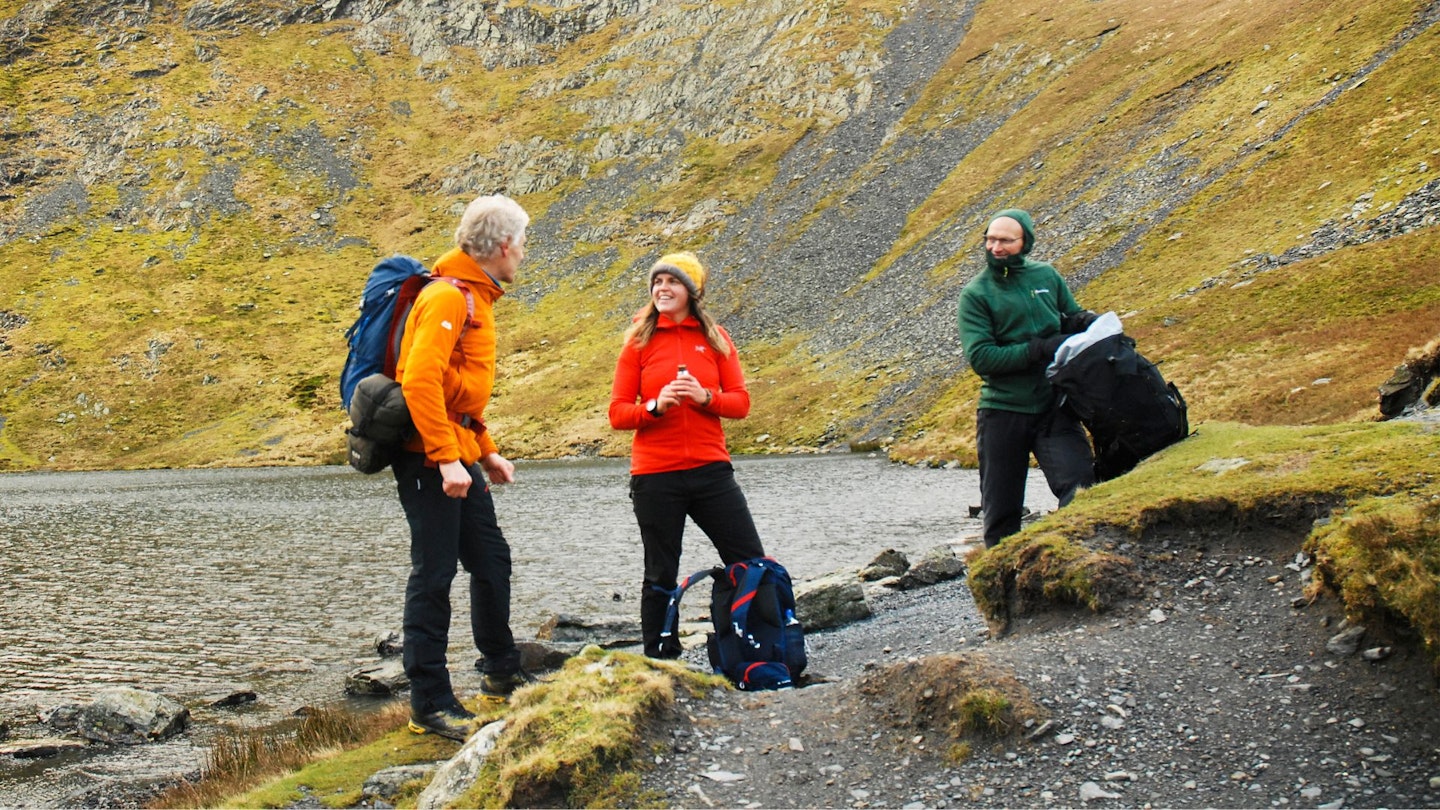
Are all fleeces the same?
Since Polartec invented the first ‘polar’ fleece in 1981, there’s been an explosion in fleece material innovations. Traditional options include polar fleece, micro-fleece (lightweight and tightly-woven) and high-loft fleece (fluffy and warm). Modern offerings include gridded fleece and Polartec’s super breathable Alpha Direct fluffy mesh tufts.
Fleeces also vary in weight and thickness, too. Thinner fleece jackets work best as mid layers. Sleek, stretchy and technical, they provide better freedom of movement and overall breathability but don’t offer much warmth. Thicker fleeces with a deeper pile trap more heat. They work best as standalone outer layers on dry days, but they are heavier and may feel too bulky underneath a hard shell.
What's the difference between cheap and expensive fleeces?
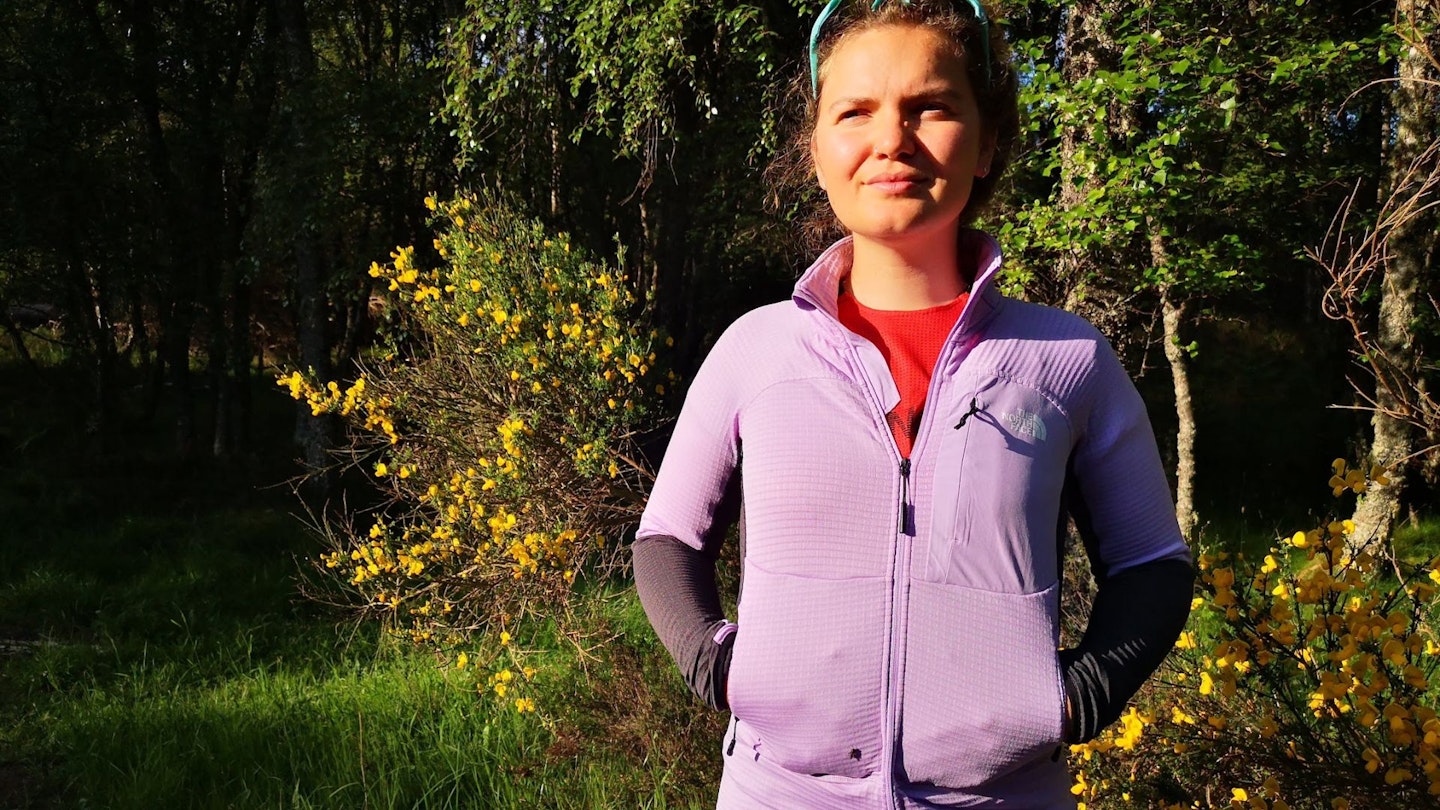
Things like design, durability, and sustainability separate cheap and more expensive fleeces (generally). A cheap fleece will be warm and functional initially, but will wear quickly and won't usually give a thought to the environment.
More expensive and 'technical' fleeces often employ more thoroughly engineered design methods. For example, some feature natural fibres such as merino wool. Others blend in additional synthetic materials like elastane. Hybrid fleece jackets mixing different materials are common. Their ‘zoned’ or ‘mapped’ construction optimises warmth, breathability and stretch.
In terms of sustainability (more on this below), we consider the use of recycled material the bare minimum these days. Brands should be doing all they can to make fleece jackets more sustainable and durable, which is worth paying for.
Should a fleece be tight or loose fitting?
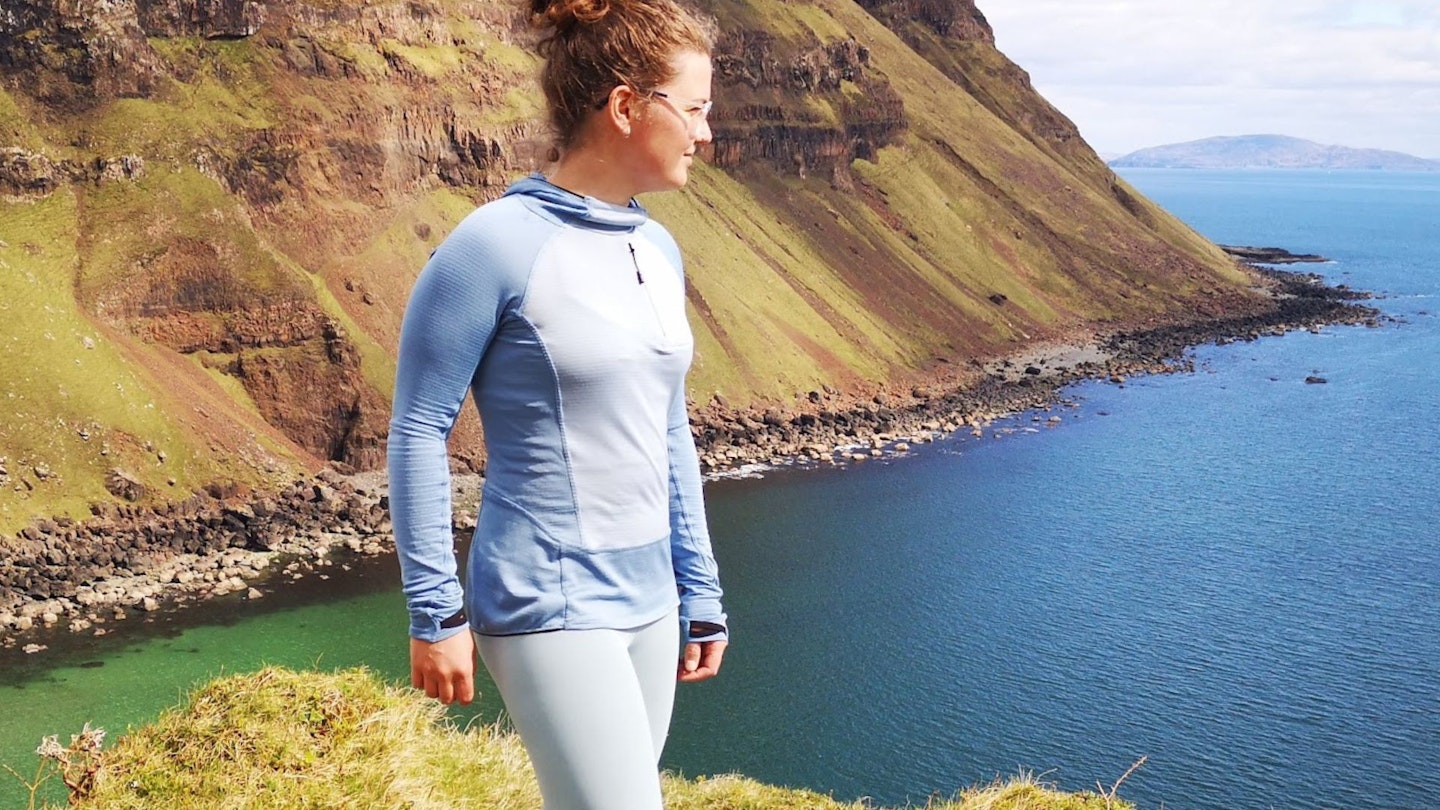
Ultimately, this is a personal choice. For hiking, a fleece needs to fit over base layers without feeling restrictive, but should also fit comfortably under a hardshell waterproof without being too chunky or boxy. Look for one with a snug, close-to-the-body fit, with warmth sealed-in at the wrist cuffs, waist hem and collar.
Adjustable drawcords or stretchy edging at the waist hem enable a snug fit tailored to your body shape. Adjustable wrist cuffs are rare, but some are elasticated for a closer fit that seals in warmth.
Should a fleece have a hood?

A fleecy hood provides excellent warmth and an essential feature for some. However, they can be annoying under other layers. If you prefer wearing a warm hat, you may not need a hood.
Are fleeces wind or waterproof?

Fleeces are neither wind- nor waterproof and thus need to be paired with a a more protective outer layer in windy or wet conditions. However, some fleeces use high-density, close-knitted yarns or the addition of wind-resistant face fabrics or membranes to keep the breeze at bay.
What about pockets and zips?
A selection of internal and external pockets is handy for storage. Handwarmer pockets are most common, but some jackets also feature Napoleon (breast) and bicep pockets too.
Fleece jackets have full-length, half, or quarter zips. Full length zips are easiest to get off and on, but they are heavier and slightly compromise warmth due to a longer seam.
Fleece sustainability
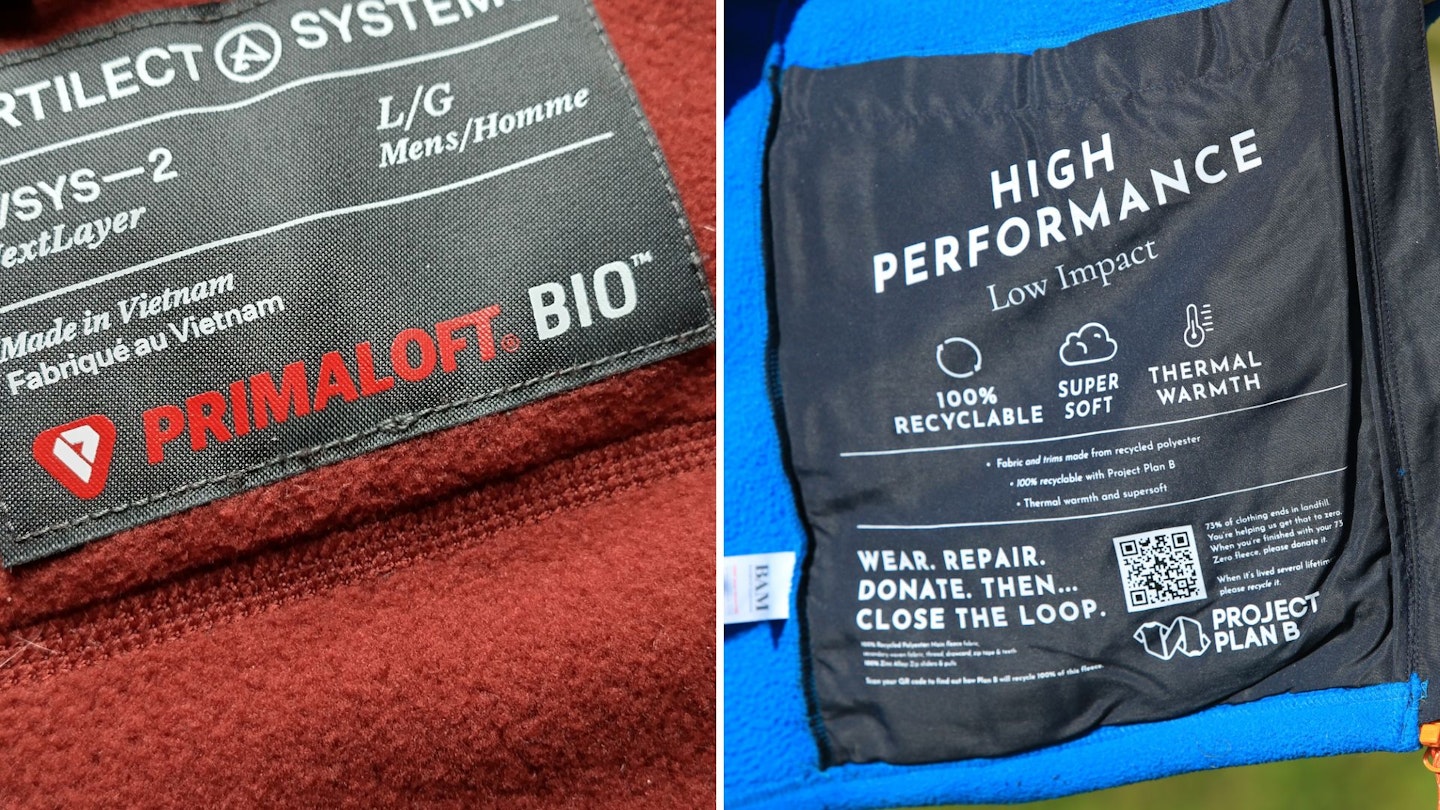
In these more enlightened times, we’ve now realised that a fabric made from petrochemicals is not so great for the planet. The manufacture of raw fleece material (polyester) emits a lot of CO2. And when put through the washing machine, fleeces release tiny strands and particles called microplastics into the environment.
Some outdoor gear brands are trying to find solutions to these problems and many fleeces are now made from recycled material, which is something but doesn't wholly address the challenge and more needs to be done.
However, innovation continues to amaze. In 2021, New Zealand outdoor gear brand Kathmandu launched a world-first range of fleeces made from Primaloft Bio. This fully recycled fabric looks and performs the same as traditional fleece, but it largely breaks down at an accelerated rate in oceans, wastewater, and landfill, the three places fleece fibres usually end up. Primaloft Bio is now being used by other brands too.
Having a circular/closed loop (i.e., recycled and recyclable) fleece is an important step too. You can also help battle against microplastic release by using a washing bag that catches the dislodged fleece strands.
About the author
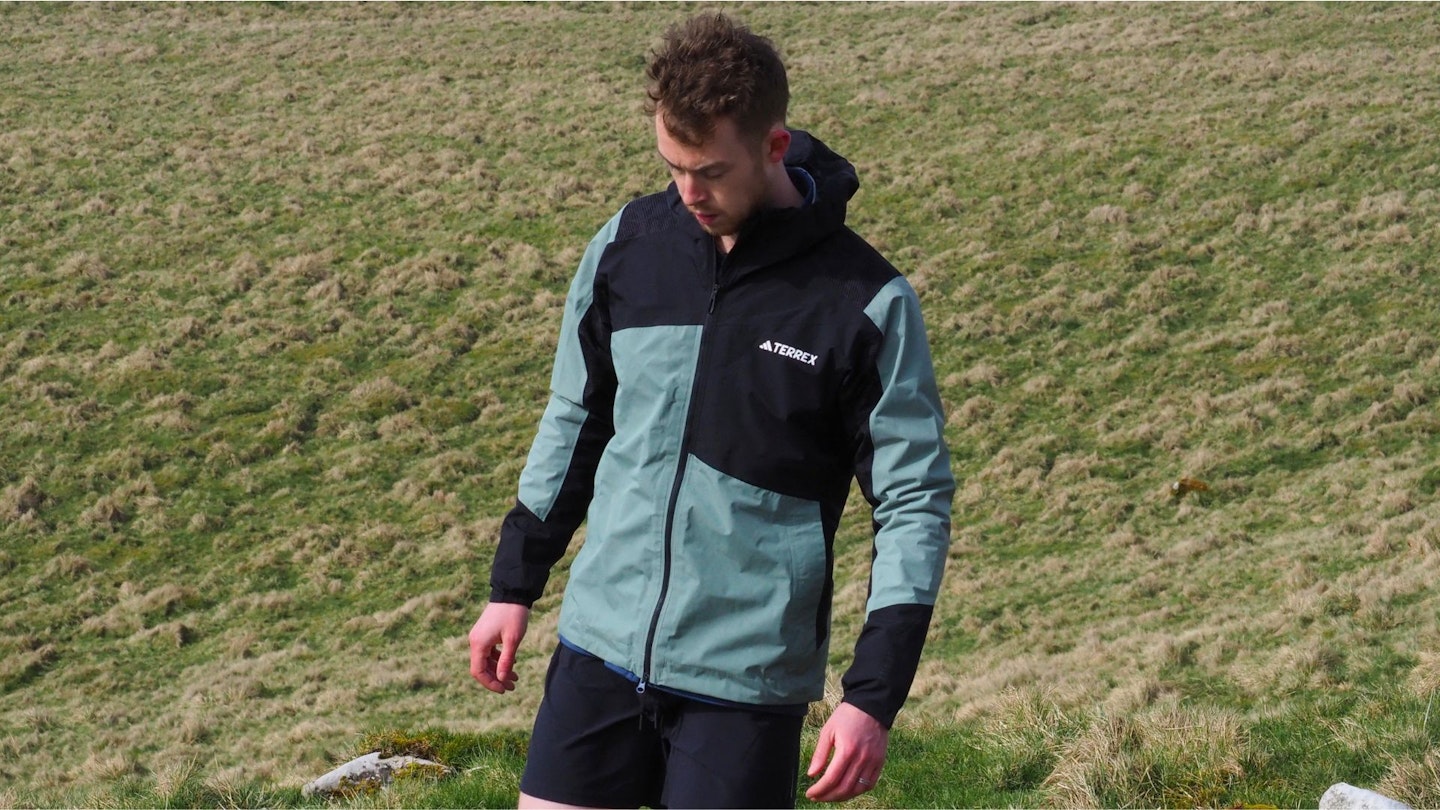
Chris Williams, our senior staff writer, compiled this piece using wider recommendations from the Trail and LFTO team. Chris is an outdoor journalist originally from New Zealand, but he now lives in Yorkshire and loves charging about the dales, testing all sorts of gear to bring you only the best of the best when it comes to reviews and recommendations.

